DROPS Baby Merino
Superwash treated extra fine merino wool
from:
2.62£
3.39€
Content: 100% Wool
Yarn Group:
A (23 - 26 stitches)
/ 5 ply / sport
Weight/length: 50 g = approx 175 m
Recommended needle size: 3 mm
Knitting tension: 10 x 10 cm = 24 sts x 32 rows
Care: Machine wash on gentle cycle 40°C / Don’t use fabric softener / Dry Flat
Superwash: yes
Made in: EU
Raw material origin: Wool from South America
This yarn has an Oeko-Tex® certification (certificate number 25.3.0110), Standard 100, Class I from the INNOVATEXT TEXTILE ENGINEERING AND TESTING, HUNGARY. This means that is has been tested for harmful substances and is considered safe in human-ecological terms. Class I is the highest level, and it means the yarn is suitable for baby articles (ages 0-3).
DROPS Baby Merino is a 100% extra fine merino wool yarn that's super soft, breathes well and is itch free - perfectly suited for delicate baby skin. Cable spun and constructed from multiple thin strands, DROPS Baby Merino gives neat, even stitches, resulting in garments with extra elasticity. It’s this special construction that makes it important to use the correct tension in your project, so use a tight tension rather than a loose one.
DROPS Baby Merino is spun from fibers from free-range, mulesing free animals from South America and is Oeko-Tex Standard 100 certified. The yarn is also superwash treated and therefore machine washable and suitable for everyday use; but when washing your garments you must be extra careful and follow closely the care instructions.
Read more about our products' sustainability here
Please be aware that the colours shown may vary from screen to screen in the same way that shades may vary slightly from dye lot to dye lot.
How do I care for this yarn?

Machine wash on gentle cycle 40°C / Don’t use fabric softener / Dry Flat
All our super wash treated merino yarns should be washed in the machine, using a gentle cycle program. That being said, there are a few more tips that are extremely relevant when it comes to caring for this yarn:
- Machine wash - separately - using a gentle cycle program at 40ºC, with a light centrifugation (about 800rpm). Only use detergents without enzymes and optical brighteners.
- NEVER use fabric softener (the wool fibers become too soft and can slide apart).
- NEVER leave the garment to soak/wet in the washing machine for a long period of time.
- To dry the garment, shape it and lay it flat - do not hang - ideally on a warm bathroom floor or on top of a drying rack in a room with good air circulation. Never dry the garment in direct sunlight.
- Never iron the garment directly. Use always a damp cloth between your steaming iron or regular iron and the garment.
Note: If you are washing a project made with this yarn combined with another, the general guideline is to follow the washing instructions for the most delicate of the yarns you are working with.
Do you have a question about this yarn?
See a list of frequently asked questions (FAQ) about our yarns.
1) What type of fibers make the DROPS yarns?
Yarn can be made from a large number of natural and synthetic fibers. DROPS carries mainly yarns made from wool, cotton, alpaca, linen, mohair and silk. Each fiber type has its own qualities, and they are often mixed to take advantage of the best properties of each one. Coarse yarn has the advantage of being stronger and more durable, and finer fibers offer more softness and comfort. Here a bit about the main fibers we carry:
Alpaca:
Alpaca fleece is the natural fiber harvested from an alpaca, and it is similar in structure to sheep wool fiber. Its softness comes from the small diameter of the fiber, similar to merino wool. It is a soft, durable, luxurious and silky natural fiber. Yarn made from alpaca fibers does not felt or pill easily, and it can be light or heavy in weight, depending on how it is spun. While similar to sheep’s wool, it is warmer, not prickly, and has no lanolin, which makes it hypoallergenic. Alpacas come in 22 natural colors, with more than 300 shades from a true-blue black through browns-black, browns, white, silver and rose-greys.
Mohair:
This fiber comes from the Angora goats, and it's considered a luxury fiber. Mohair yarn is warm as wool, but much lighter in weight; it is durable, dyes well and does not felt easily. Mohair fibers have also a distinctive luster created by the way they reflect light. Despite being a hard fiber, mohair is usually spun into a very fluffy yarn, resulting in airy and lustrous garments.
Wool:
The wool fibers come from the skin of sheep and are relatively coarse fibers. Two striking characteristics of wool are its susceptibility to heat and its felting property, which is caused by the scales on the surface. Depending upon the breed of sheep, the appearance of the wool varies.
Wool from Merino sheep is considered the finest type of wool, having as characteristics that is finely crimped and soft. All the Merino wool in the DROPS yarns has its origins in South America, coming from sheep that have not been subject to Mulesing.
Pure new wool is wool made directly from animal fleece, and not recycled from existing wool garments.
Machine washable wool is wool treated chemically to minimize the outer fuzzy layer of the fibers, and be therefore fitable for machine wash (see Superwash).
Silk:
The silk fiber is a fine continuous fiber produced from the cocoon of a moth caterpillar known as the silkworm. While silkworm is cultivated, the wild or tussah silk is obtained from uncultivated silkworm cocoons. Silk fiber is one of the strongest natural fibers and makes a wonderful knitting yarn. It blends really well with other fibers, especially wool. Silk also dyes beautifully with natural dyes.
Vegetable fibers:
There are several varieties of vegetable fibers, found in the cell walls of plants or vegetables. Of all the varieties, two are recognized as major knitted or textile fibers. They are cotton and linen.
Cotton is the fiber surrounding the seeds in a cotton pod, and it is almost pure cellulose. Cotton is usually white in color but there are green and brown varieties as well. The cotton fiber is most often spun into yarn or thread and used to make a soft, breathable textile that is good for summer clothing and accessories, making a weaker yarn than silk or linen but stronger than wool.
Mercerized cotton is cotton that has been through a mercerization treatment. This treatment gives cotton fabrics and threads a lustrous yarn that is more lustrous than conventional cotton. It is also stronger, takes dye a little more readily, makes the yarn more resistant to mildew and reduces lint. It also may not shrink or lose its shape as much as "regular" cotton.
Linen is a fiber derived from the stalk of the flax plant that is durable and stronger than any other fiber. The linen fiber is relatively soft, straight and lustrous and becomes more beautiful with age. Linen is more comfortable to wear in hot temperatures than cotton, due to the fact that it absorbs moisture better and dries more quickly.
Other materials used in our yarns include synthetic fibers such as acrylic, viscose, polyamide (nylon) and polyester. These fibers are used mostly to give strength to a yarn (like our sock yarn, DROPS Fabel) or a special kind of structure (like our blown yarn, DROPS Air).
The polyamide fibre, commonly known as nylon, is very strong, durable, lightweight, easy to care for (can be machine washed and dried), and elastic, which makes it perfect for blending with other fibres to produce hard-wearing yarns like sock yarn.
Compared to polyester, polyamide is softer and more flexible, but it also absorbs more water and dries slower.
3) What type of information can I find on the DROPS yarn labels?
All DROPS yarn labels include information about fiber content (wool, cotton, etc.), weight in grams and ounces, length in meters and yards, washing instructions and symbols (explained here), color number, dye lot number and yarn group information.
4) What are the DROPS yarn groups?
All DROPS yarns are classified into 6 different thickness groups (A to F). Yarns in a same group have similar knitting tension/gauge, and can therefore be interchanged in patterns; however the length may be different, so when substituting always calculate the amount of meters/yards needed for the pattern to know the amount of yarn you need to get.
5) Can I use a different yarn than the one mentioned in the pattern?
Yes, as long as the yarn can be worked in the same knitting tension/gauge. Always swatch to make sure you get the same number of stitches in width and rows in height as given in the pattern.
Remember that different yarns with different textures, will give the garment different looks. The yardage/length may also be different, so when substituting always calculate the number of yards needed, in order to know the amount of yarn you need.
Read more about how to calculate the amount of an alternative yarn - and how to replace 1 thread of a yarn with 2 or more of another, here.
6) What does it mean when a yarn is “Superwash”?
A superwash wool is a special wool product that has been treated or processed in a way that allows it to be machine washable. Many people are afraid to work with wool because it is so easy to shrink (though some shrink wool on purpose) and superwash wool can allow them to work with great fibers without worry. (Read more here).
7) What does “Oeko-Tex® certified” means?
The Oeko-Tex® Standard 100 was introduced at the beginning of the 1990s as a response to the needs of the general public for textiles which posed no risk to health. The Oeko-Tex® Standard 100 is a globally uniform testing and certification system for textile raw materials, intermediate and end products at all stages of production. The test for harmful substances comprise substances which are prohibited or regulated by law, chemicals which are known to be harmful to health, and parameters which are included as a precautionary measure to safeguard health.
For more info go to www.oeko-tex.com
10) How accurate are the colours on the shade cards online?
When obtaining images for the shade card, we do our best to achieve the highest level of color accuracy. Unfortunately, we cannot guarantee how images will appear on your computer screen. Every monitor displays color differently, some colors might look darker than they really are, and some colors might be more saturated on some screens. If you experience that many of the yarn colors looks different on your screen than the actual color of the skeins, you can adjust the setting on your monitor.
11) What is a micron? What does super fine / extra fine mean?
The fineness of yarn fibers is measured in microns (thousands of millimeters). Super fine alpaca wool is 26-28 microns. Fine merino wool is less than 21.5 microns and extra fine merino is under 19.5 microns. The less microns the softer and more delicate a quality can be, the more microns the more hard wear the quality will be.
The reason why the microns in a yarn’s fibers are important is that the yarn will eventually become something else, and how delicate or coarse a yarn is will determine in part what we use it for. That’s why we recommend the softest yarns (like DROPS Baby Merino) for baby clothing, or why we choose to use a more hard wear yarn like DROPS Snow, for a seating pad or slipper.
12) Why are the colours in my skeins of print yarn different?
The reason why two skeins of a same print yarn look different can be 1) that both skeins are part of different dye lots; 2) that the skeins have been dyed using a technique called "magic print" (the one used for example in DROPS Delight), which provides unique patterns and smooth colour transitions to each skein, meaning also that within one dye lot, lighter or darker varieties might appear. This is no fault or defect, but part of the yarn's character.
13) My store doesn’t have the colour I want, what can I do?
If your DROPS store doesn’t have the yarn colour you want, try contacting a DROPS Super Store (the ones with the golden badges) - they will make sure to get a hold of the colour even if they don’t have it in stock themselves. See a list of all DROPS stores here.
14) Where can I find a specific dye lot of a colour?
Always try contacting your DROPS store first. If they do not have the dye lot you want we recommend you to ask other knitters and crocheters in the DROPS Workshop in Facebook or Ravelry, which may have the dye lot in their stash and might be willing to part from it.
Yarn sheds because there's not enough twist to hold all of the fibers together. All yarns have excess fibers (from production) that might come off as lint or shedding, in varied degrees that depend on how the yarn is spun. Brushed yarns ("hairier" yarns) like DROPS Melody, have more of these loose fibers than other yarns, and therefore shed more. Shedding also depends on what is worn under or over the garment, and whether this pulls at the yarn fibers. It’s therefore not possible to guarantee that there will be no shedding.
Below are some tips on how to get the best result when working with hairier yarns:
- When the garment is finished (before you wash it) shake it vigorously so the looser hairs come off. NOTE: do NOT use a lint roller, brush or any method that pulls at the yarn.
- Place the garment in a plastic bag and put it in your freezer - the temperature will cause the fibers to become less attached to each other, and excess fibers will come off easier. Leave in the freezer for a few hours before taking it out and shaking it again.
- Wash the garment according to the instructions on the yarn label. Garments worked with hairier yarns usually need to be shaken once dry after washing, so that the hairs rise and any excess fibers can come off.
Pilling is a natural process that happens to even the most exclusive of fibers. It's a natural sign of wear and tear that is hard to avoid, and that is most visible in high friction areas of your garment like a sweater's arms and cuffs.
You can make your garment look as new by removing the pilling, using a fabric comb or a pill/lint remover.
How can I replace this yarn?
If you are looking to replace this yarn with another DROPS yarn, you can use another yarn within the same yarn group, or try our yarn converter!
Other yarns in Yarn Group A
Read more about replacing yarn.Have a problem with the DROPS yarn you purchased?
When you purchase yarn from the shade cards or patterns on our site, you are not buying directly from DROPS but from one of the hundreds of DROPS stores around the world. It is therefore important that you take contact with the DROPS store where you bought the yarn, and that you save the labels of all the skeins you purchased (they are your warranty).
The DROPS store you contact will assist you and escalate the claim if necessary. Find a list of DROPS stores here.
Comments / Questions (466)
![]() Anne Mari Ramsrud wrote:
Anne Mari Ramsrud wrote:
Hva er forskjellen på "lys himmelblå" og "isblå"? For meg ser de helt like ut (på skjermen), men jeg antar at det er en forskjell. Er den ene lysere enn den andre? Går fargen mer mot turkis eller lilla på den ene eller den andre??
29.04.2015 - 23:29DROPS Design answered:
Hei Anne-Mari. Den isblaa er lysere end den himmelblaa. Men kontakt din DROPS butik og faa hjaelp til at vaelge den rette farve. Se oversigt af forhandlere her
30.04.2015 kl. 15:00
![]() Pauline wrote:
Pauline wrote:
I have this yarn. Knitted a Cardigan. Washed the yarn per instructions. Dryed per the instructions and the garment is all out of shape. Any advice please?
17.03.2015 - 18:45DROPS Design answered:
Dear Pauline, when working with Baby Merino you have to rather knit tighter than too loose, wash in the washmachine following care instructions, let flat to dray and block at the final dimensions as stated in the measurement chart/final measurements. See also general care tips here.
18.03.2015 kl. 09:56
![]() Hildur Margrét Nielsen wrote:
Hildur Margrét Nielsen wrote:
I would like to point out that the prices for DROPS yarn in Iceland are most definitely not in accordance with the stated Max Price on your website, they are much higher (around 50%).
26.01.2015 - 14:32DROPS Design answered:
Dear Mrs Nielsen, there is now a new store in Iceland where you can get DROPS yarns at max prices, click here to read more about the store. Happy knitting!
17.02.2015 kl. 13:40
![]() Moa wrote:
Moa wrote:
Jag undrar om det finns någon risk för förekomst av mulesing av djuren vars ull ni spinner garnet av? Mvh, Moa
06.01.2015 - 16:56DROPS Design answered:
Hei Moa. Vores garner bliver kun fremstillet af uld fra dyr i Syd-Amerika og Syd-Afrika. Her er mulesing ikke tilladt!
13.01.2015 kl. 10:46
![]() Dagmar Lunge wrote:
Dagmar Lunge wrote:
Mit viel freude habe ich die wolle erwartet , die ich zum ersten mal bei lanade bestellt habe! ich habe mich sehr auf die farbe hellgelb nr.03 gefreut leider kommt die farbe mehr der farbe 02 naeher in creme näher ich bin sehr enttäuscht darüber
06.01.2015 - 14:30
![]() Lyda wrote:
Lyda wrote:
Bonjour trés belle laine,trés agreable a tricoter,mais beaucoup de neuds dans les pelotes
04.01.2015 - 08:32
![]() Sylvie wrote:
Sylvie wrote:
Bonjour, pourriez vous m'indiquer la référence couleur de la laine bleu vert qui se trouve sur la photo de la qualité baby mérinos photo qui represente 2 pelotes bleues et une pelote bordeaux. Merci
29.12.2014 - 20:32DROPS Design answered:
Bonjour Sylvie, sur cette photo, on voit la couleur 10, turquoise clair. Rappelez-vous qu'il peut y avoir une différence de couleur entre la photo (zoom, luminosité, écran...) et la couleur originale. Bon tricot!
05.01.2015 kl. 08:38
![]() Kirsten Jahn Nielsen wrote:
Kirsten Jahn Nielsen wrote:
Hvorfor står der ikke uld vask eller håndvask på banderolerne til drops baby merion Kjolen jeg strikkede er blevet lang og slasket efter vask ved 40 grader Ærgerligt da den tog lang tid at strikke den Hilsen Kirsten
26.12.2014 - 21:59
![]() MAYNADIES wrote:
MAYNADIES wrote:
Je viens de commander de la laine baby mérinos j'avais commandé de la laine jaune pâle n° 3 je pense que l'on ne peut pas appeler cette laine jaune pâle mais beige car elle n'a pas du tout la même,couleur que sur le Pc meme si il peut y avoir une différence elle n'est pas jaune
11.12.2014 - 17:07
![]() Dorte wrote:
Dorte wrote:
Hej Jeg har strikket en dejlig sweater til min søn i baby merino. Da jeg håndvaskede den (kke for varmt, og rullet ind i håndklæder) blev den 25 % større - hvad er der sket? og når jeg strikker den om, kan jeg så regne med at den ikke ændrer størrelse efter vask næste gang? Jeg strikkede på pind 3,5. Håber I kan hjælpe mig med hvad jeg skal gøre. Dorte
07.12.2014 - 22:06DROPS Design answered:
Hej Dorthe. Det var aergeligt! Det er vigtigt at naar du vasker Baby Merino'en at den ikke ligger for lang tid i vandet, saa mister det elasticiteten. Du kan sagtens vaske det her garn i vaskemaskine. Men pröv at strikke en pröve först og vask den, saa ved du praecis hvordan du skal haandtere garnet. Tjek ogsaa strikkefastheden, hvis det er for löst, kan det ogsaa göre at arbejdet vokser. God fornöjelse med det.
09.12.2014 kl. 13:43
![]() Doris wrote:
Doris wrote:
Schönes Garn, angenehm zu verstricken. Unbedingt Maschenprobe machen, diese waschen und nach dem Trocknen die Anzahl und Reihen Maschen auszählen. In der Maschine bei 40° im Wollwaschgang gewaschen, anschließend geschleudert.
07.12.2014 - 20:23
![]() Aude wrote:
Aude wrote:
Bonjour! Est-ce qu'on peut tricoter la baby merino à la machine? Merci.
06.12.2014 - 12:29DROPS Design answered:
Bonjour Aude, chaque machine à tricoter est différente, pensez à bien consulter la notice de votre machine à l'aide des indications métrage/poids, échantillon de Baby Merino - votre magasin DROPS pourra certainement vous aider et vous conseiller si besoin. Bon tricot!
07.12.2014 kl. 13:50
![]() THELE Annelis wrote:
THELE Annelis wrote:
Comment sont élevés les moutons et agneaux servant à la fabrication de la laine que vous produisez (élevés en Afrique et ou en Amérique du Sud)... ? Comment pouvons-nous être sûr d'acheter un produit qui respecte les animaux et leur bien être ? Il devrait exister un label permettant aux personnes responsables d'acheter en toute confiance des produits respectueux des animaux et de la nature en générale. Merci de me répondre.
13.11.2014 - 16:11DROPS Design answered:
Bonjour Mme Thele, vous retrouverez toutes ces informations dans notre FAQ en cliquant ici. Bon tricot!
14.11.2014 kl. 13:52
![]() Camilla wrote:
Camilla wrote:
Hej Må man spørge, hvordan I superwash behandler garnet? Jeg har nemlig hørt at nogle garner får et lag akryl udenpå, og jeg er derfor nysgerrig om det også gælder jer garn? Mvh. Camilla
11.11.2014 - 18:13DROPS Design answered:
Hej Camilla. Der er ikke brugt akryl til at superwash behandle vores garn, det er en slags "lim film" der daekker fibrene og gör at ulden ikke filter i varmt vand.
05.12.2014 kl. 15:17
![]() Marta wrote:
Marta wrote:
Buongiorno, vorrei fare un vestito usando Baby Merino unito aKid Silk vanno bene i ferri n.5 o è meglio usare il 4 o il 4,5. Grazie Marta
30.10.2014 - 14:27DROPS Design answered:
Buongiorno Marta. Provi a fare campioni con misure di ferri diverse, lavorando con i due filati insieme. E’ importante lavare il campione: la Baby Merino cede un po’ dopo il lavaggio. Scelga la misura di ferri che la soddisfa come regolarità del punto e consistenza del lavoro. Buon lavoro!
31.10.2014 kl. 11:04
![]() Sandra Polichino Mazy wrote:
Sandra Polichino Mazy wrote:
Is this a sport weight yarn?
15.10.2014 - 10:32DROPS Design answered:
Dear Mrs Polichino Mazy, your are correct, it's a Sport / 5 ply (12 wpi). Happy crocheting & knitting!
15.10.2014 kl. 10:37
![]() Camilla wrote:
Camilla wrote:
Hej :-) Jeg undrer mig over, hvordan det kan være, at der i sidste uge stod ved denne garnkvalitet (og ligeledes ved Big Merino og Merino Extra Fine) at det var øko-tex certificeret, men nu står der ingenting?? Er garnet at betragte som økologisk??
15.10.2014 - 08:39DROPS Design answered:
Hej Camilla, Garnerne er stadigvæk Oeko-Tex certificeret! Vi opdaterer i øjeblikket farvekorten, så licenserne vil snart blive lagt ud igen.
15.10.2014 kl. 09:26
![]() Frieda wrote:
Frieda wrote:
Kan je deze wol wel lanoliseren? Of moet het dan te lang in het water en rekt het dus flink uit? Kan je t ook te klein breien om t rekken op te vangen?
28.09.2014 - 21:00
![]() Inga-Lill Bengtsson wrote:
Inga-Lill Bengtsson wrote:
Jag har också råkat att plagget jag stickat tappade formen helt efter tvätt. Fick efteråt veta att man inte skall tvätta detta garn i såpa eller använda mjukmedel/sköljmedel/wool detergent(don't use WOOL DETERGENT!!) Jag tycker att ni borde skriva ut det i klartext när ni beskriver hur plagg i detta garn skall skötas.
09.09.2014 - 11:03
![]() Alessandra wrote:
Alessandra wrote:
Salve vorrei sapere se va bene per una copertina invernale per bambini e se non è adatta cosa mi consigliate grazie
02.09.2014 - 22:45DROPS Design answered:
Buongiorno, si certo, la Baby Merino è perfetta per lavori destinati a neonati e bambini. Buon lavoro!!
13.10.2014 kl. 10:55Lena wrote:
I used this yarn to knit a baby hat in white colour. I hand washed it with cold water and wool detergent and dry it flat,but it end up 2 sizes larger than was initially. Very disappointed. ..anyone with similar experience?
02.09.2014 - 21:43DROPS Design answered:
Dear Lena, when working with Baby Merino you have to rather knit tighter than too loose, wash in the washmachine following care instructions, let flat to dray and block at the final dimensions as stated in the measurement chart/final measurements.
14.10.2014 kl. 13:41
![]() Siggi wrote:
Siggi wrote:
Habe mir die Baby Merino in Farbe 19 gekauft um einen rundgestrickten Pullover anzufertigen. Bin beim dritten Knäuel angelangt, das sage und schreibe 5 Knoten hatte !!!!
13.06.2014 - 10:24
![]() DROPS Design NL wrote:
DROPS Design NL wrote:
Hoi Marleen. De kleur 29 is niet meer verkrijgbaar.
06.03.2014 - 10:06
![]() Giorgia Lanzilli wrote:
Giorgia Lanzilli wrote:
Filato perfetto per i capi dei neonati! Non perde pelucchi, tiene caldo (ho provato facendo una sciarpa per me) e non "pizzica" a contatto con la pelle. Anche la resa è ottima: con 50gr si realizzano 2 cappellini (e ne avanza ancora) da neonati.
05.02.2014 - 14:00






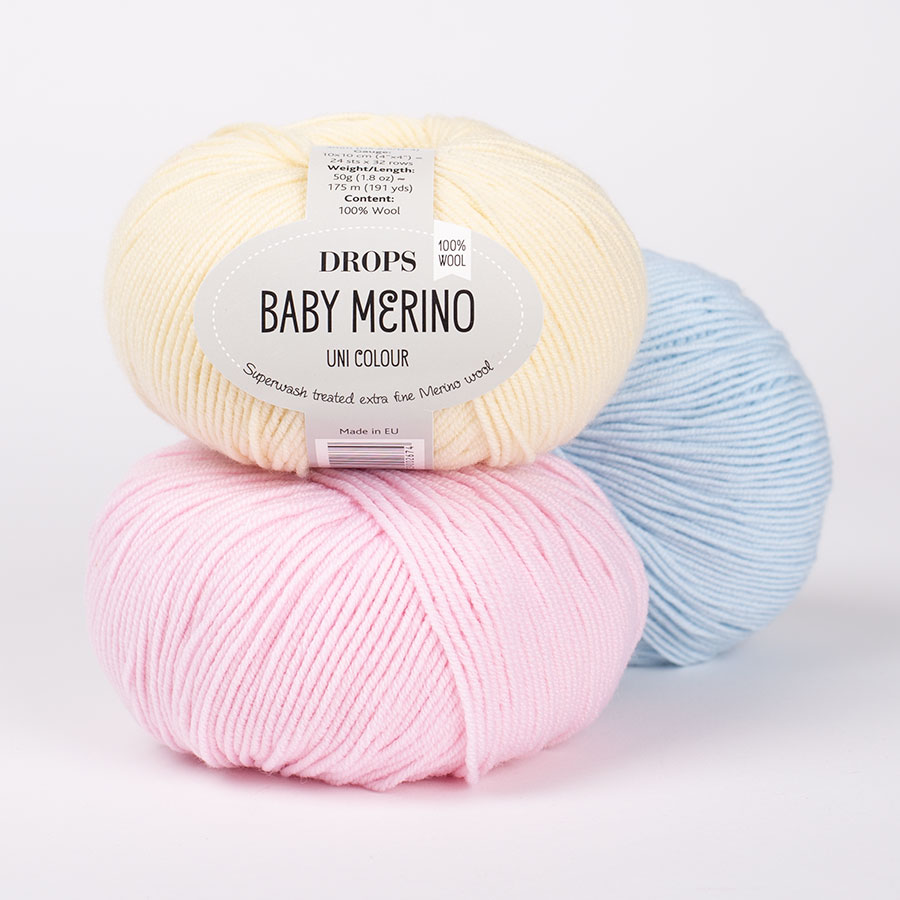
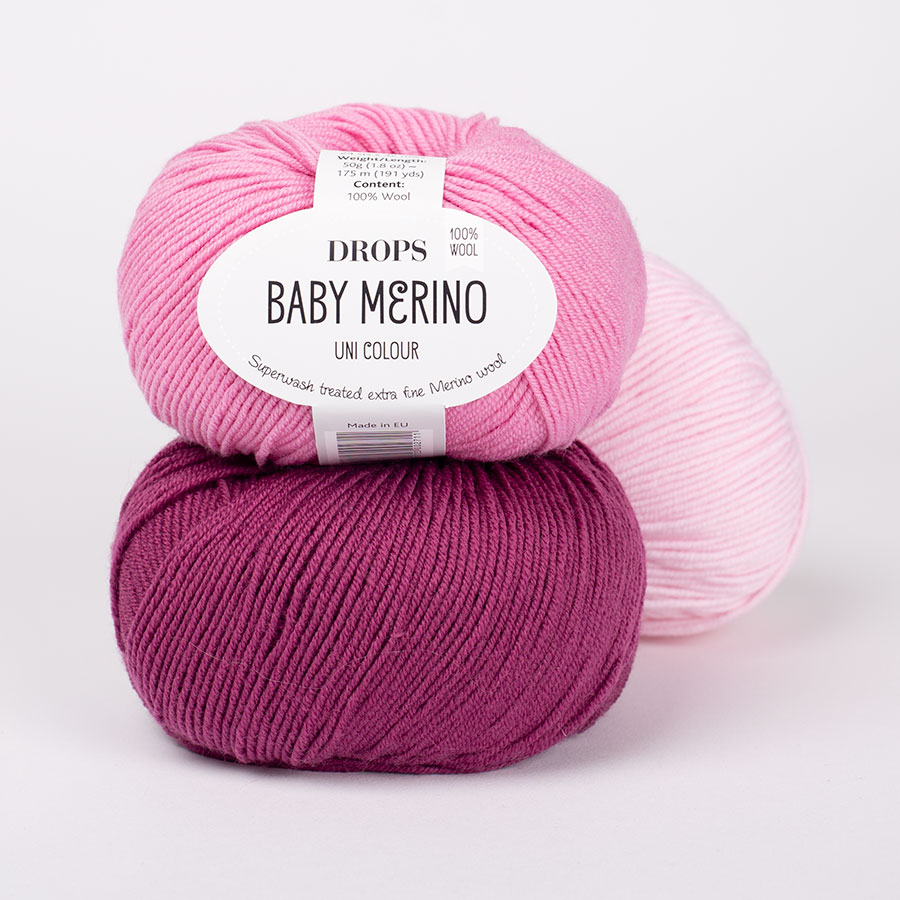
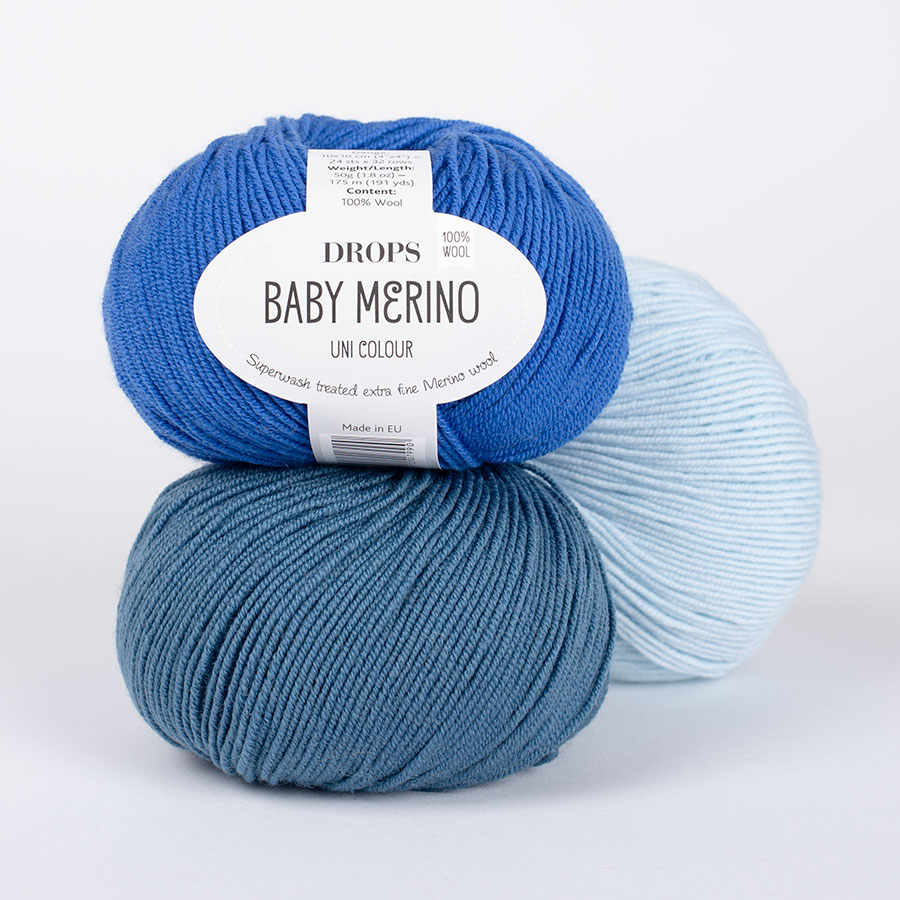
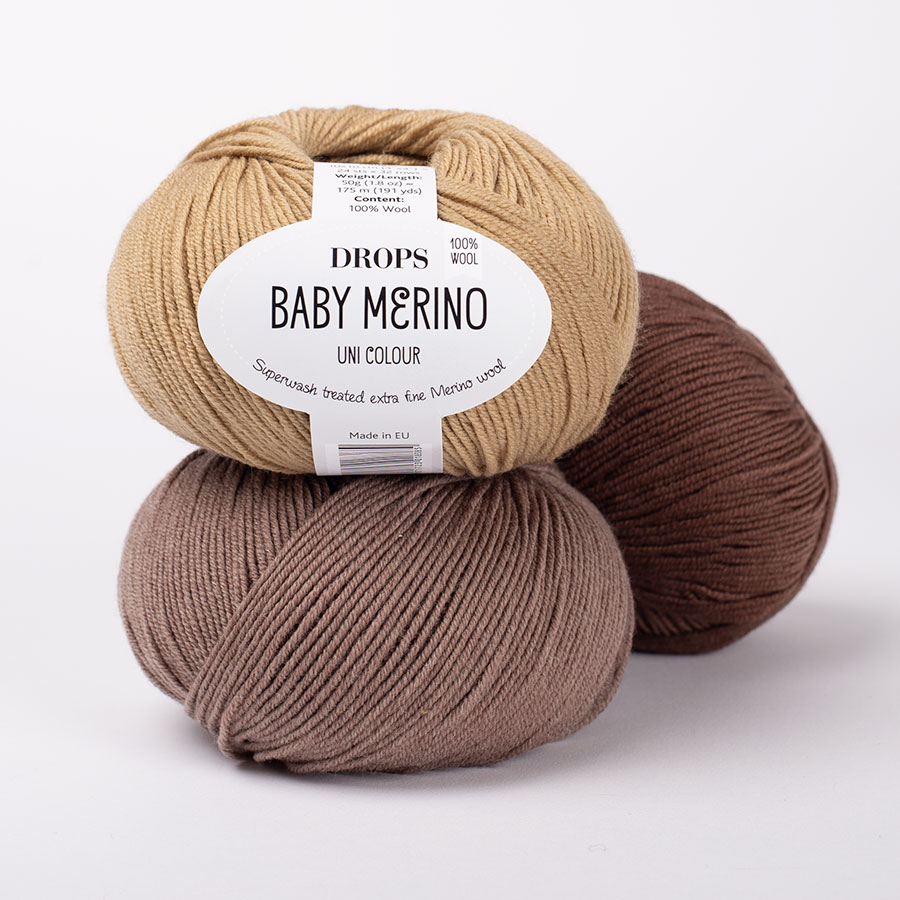

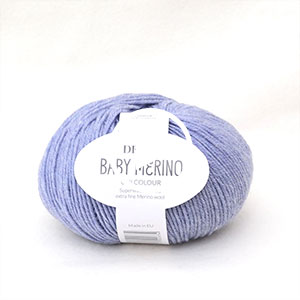











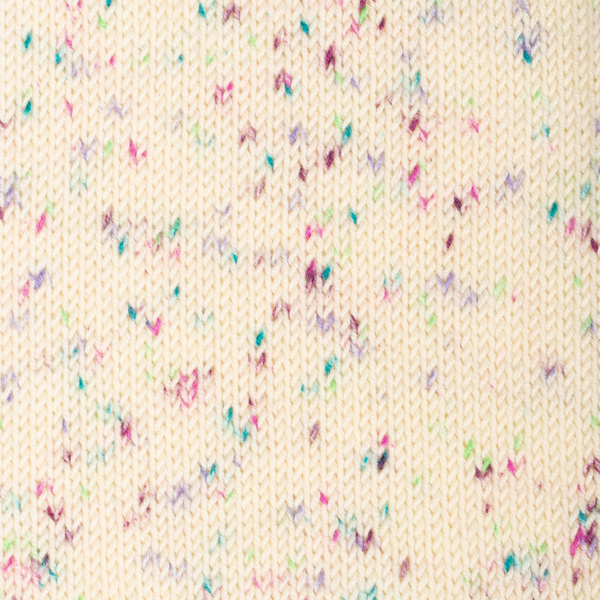

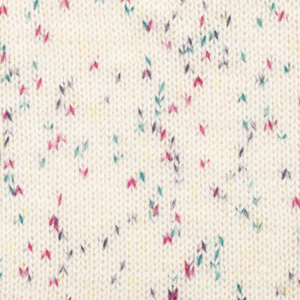

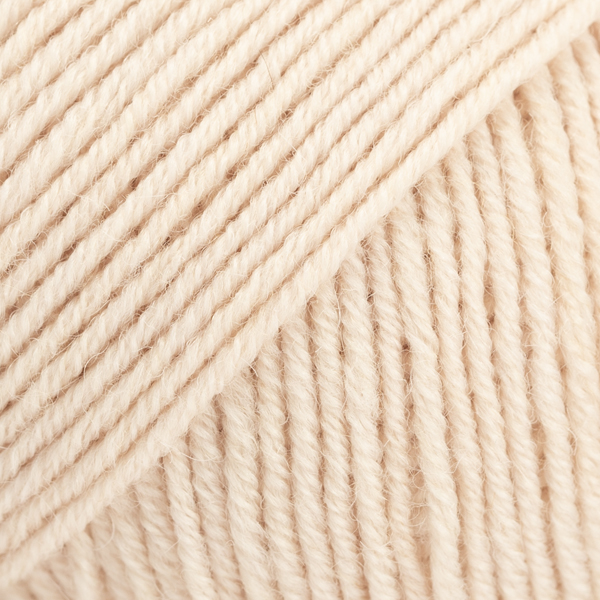

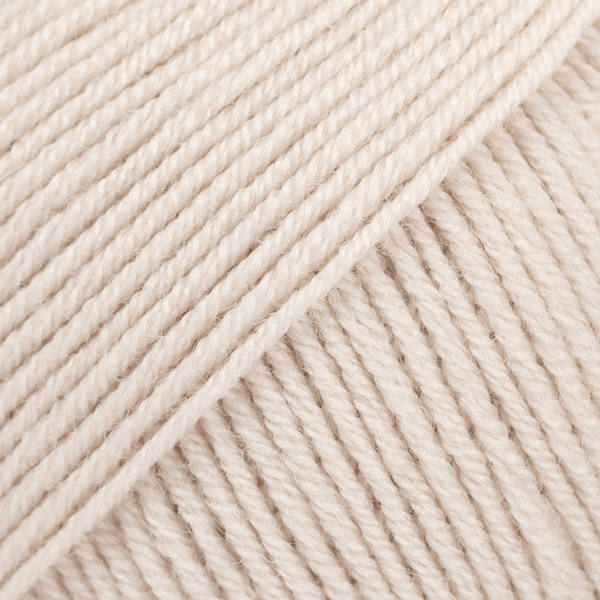






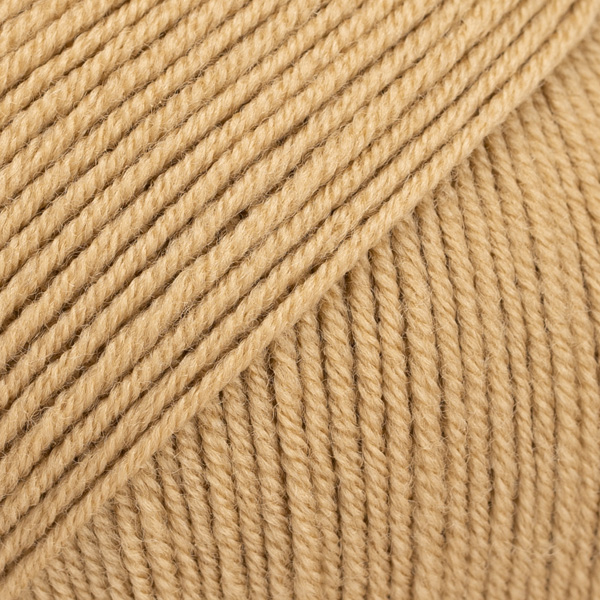

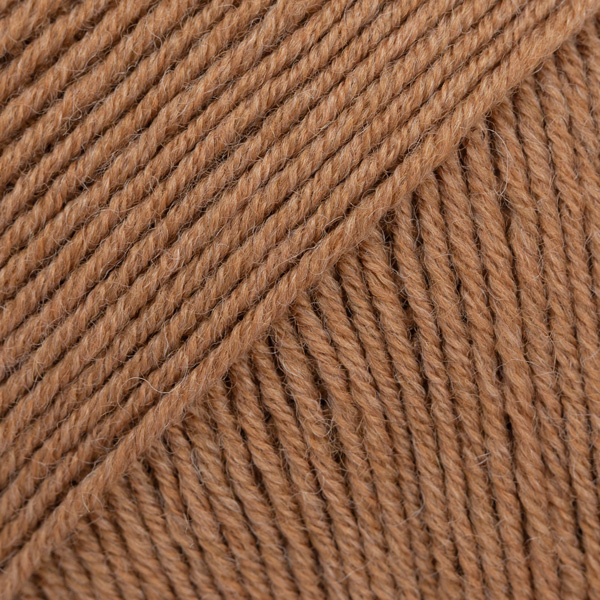

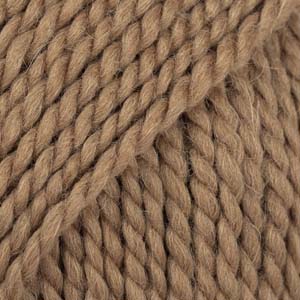



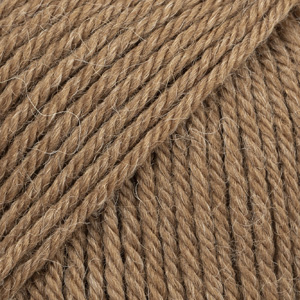




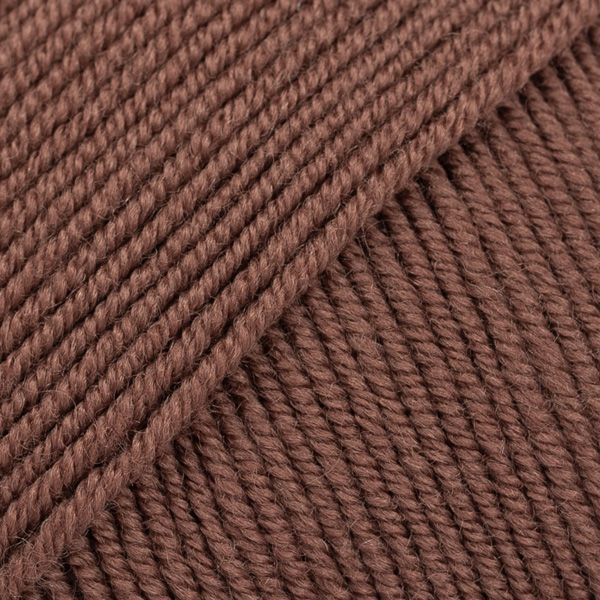


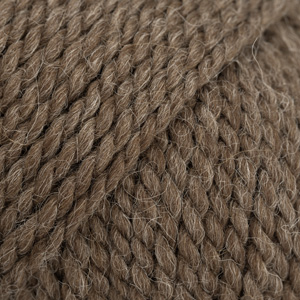



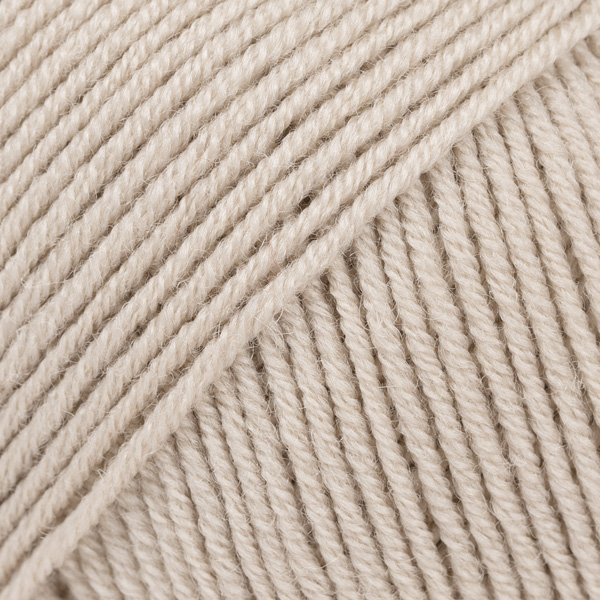








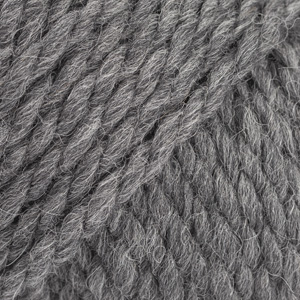

















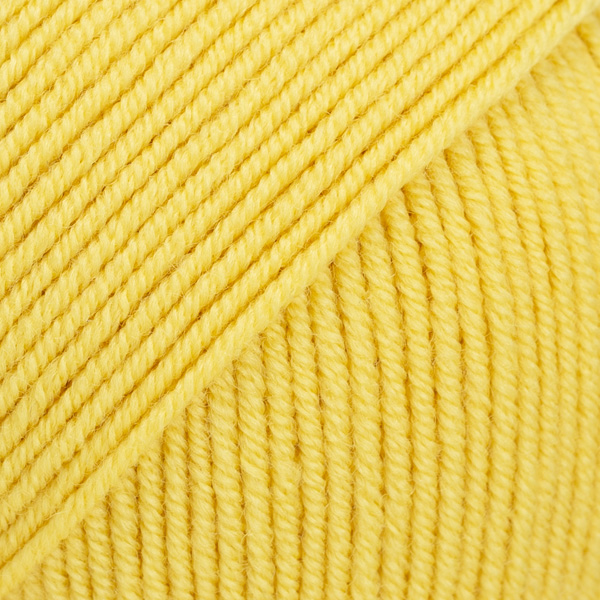



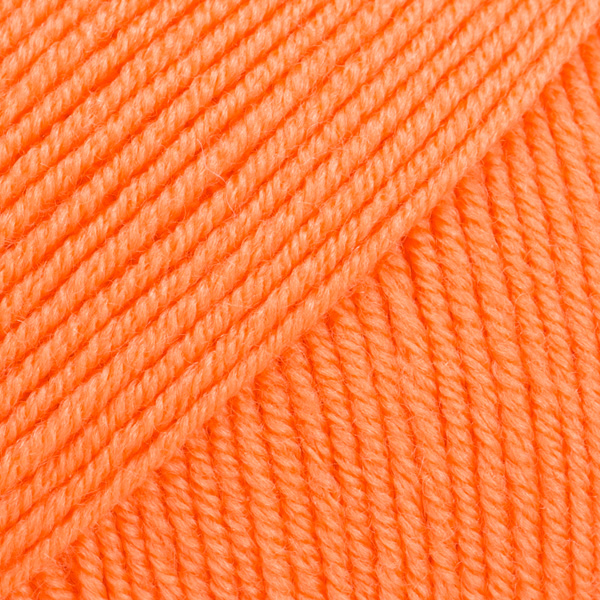














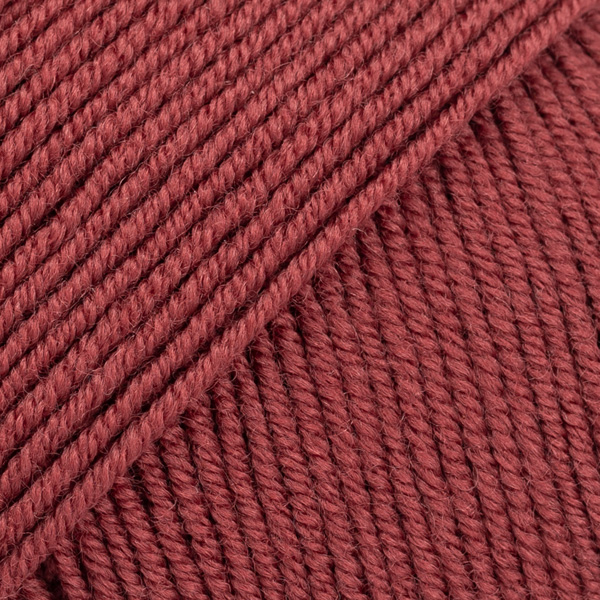




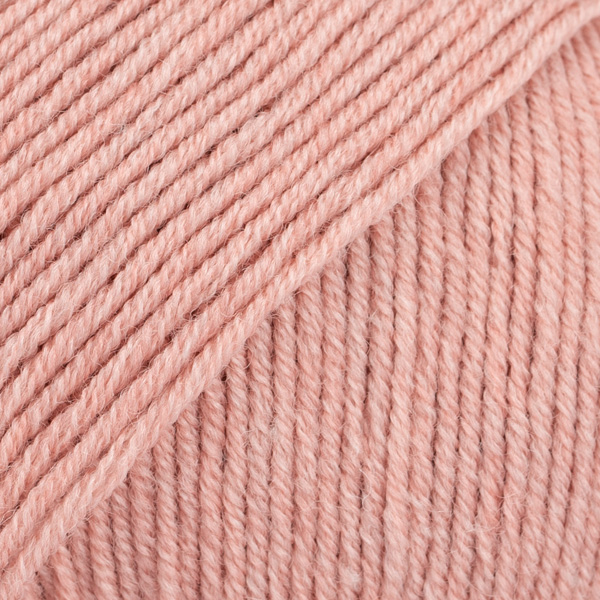


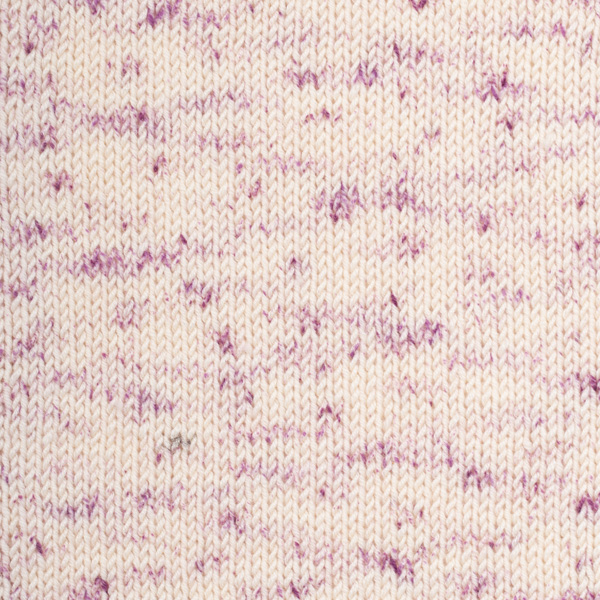
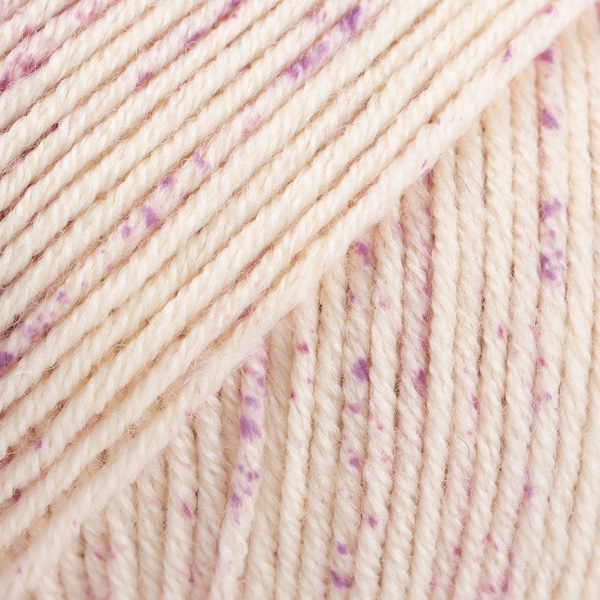

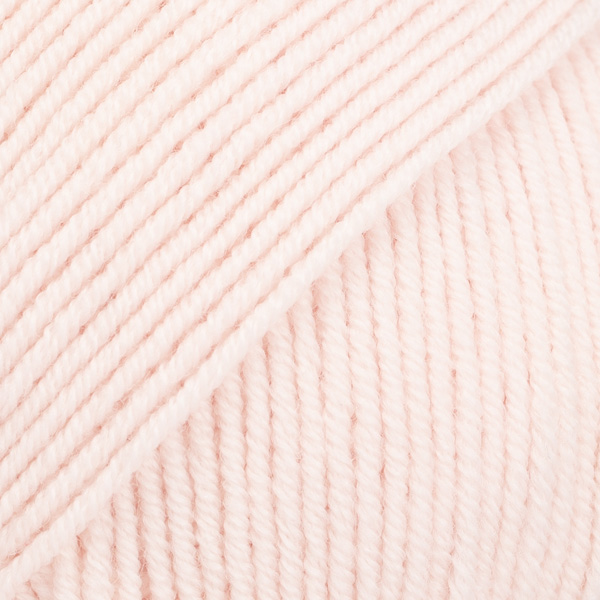

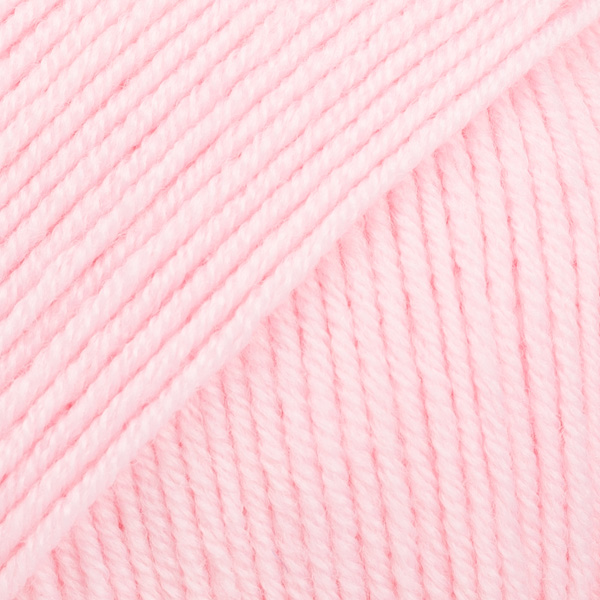



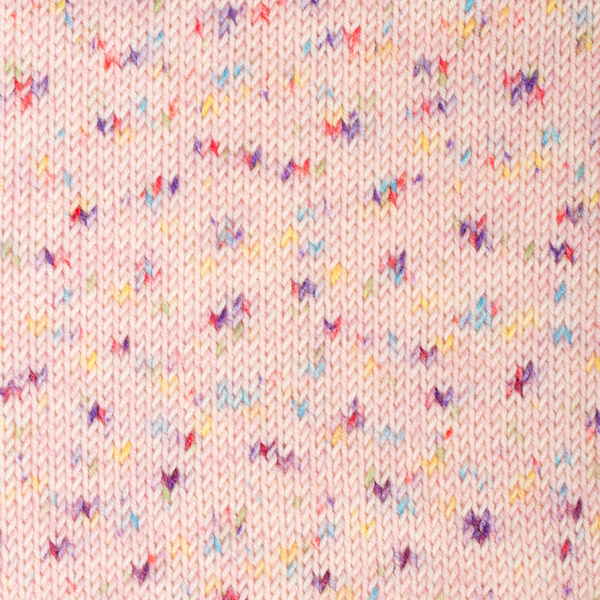


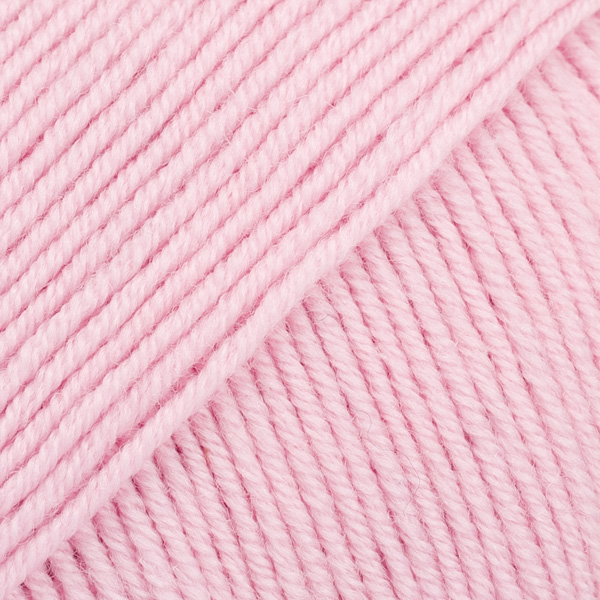
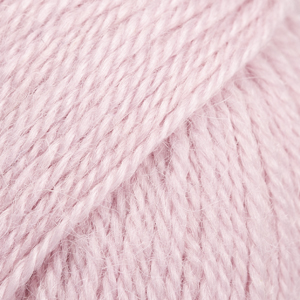











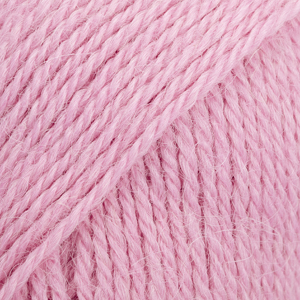


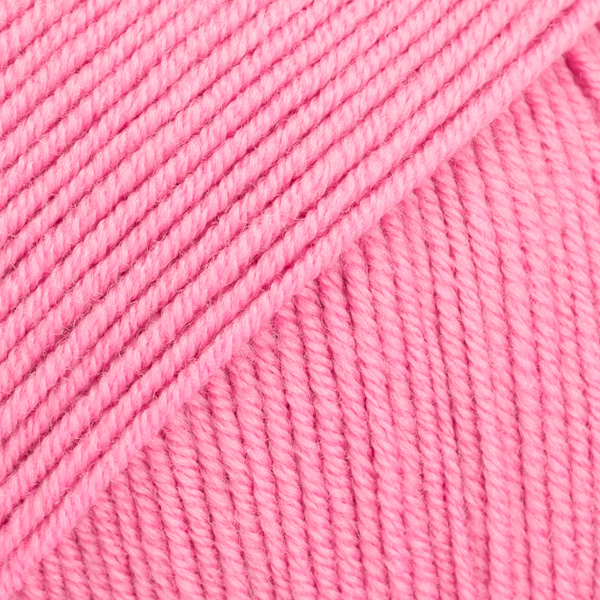

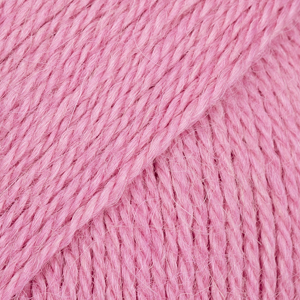


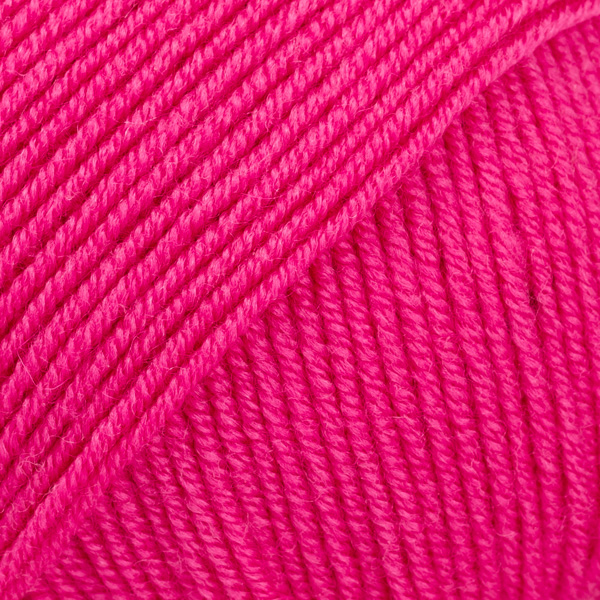

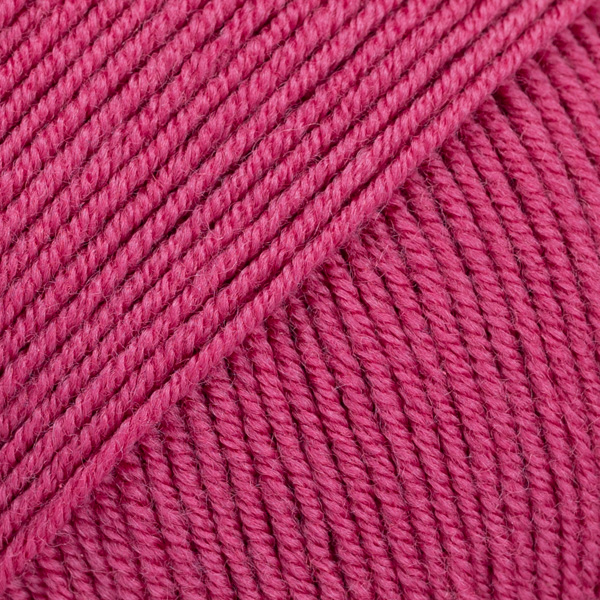
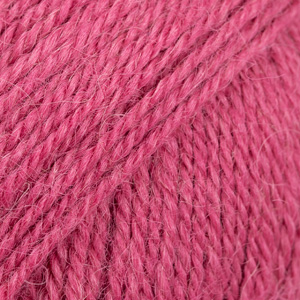

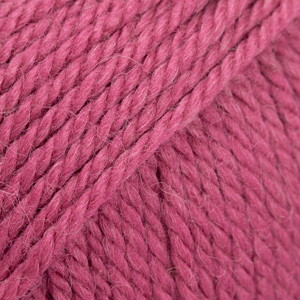




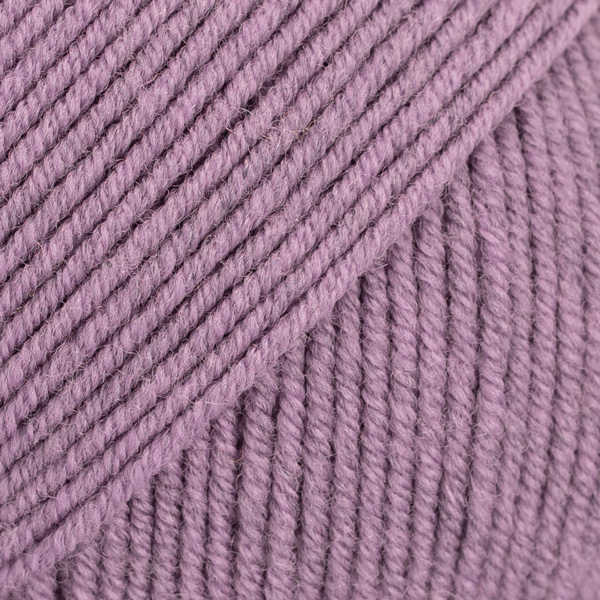



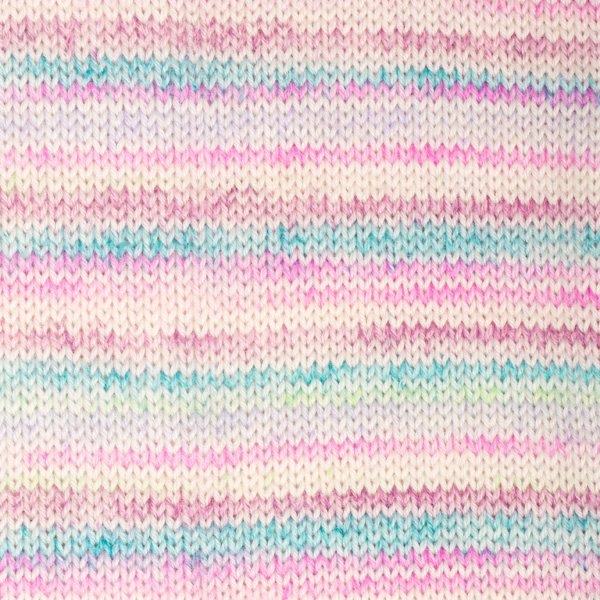


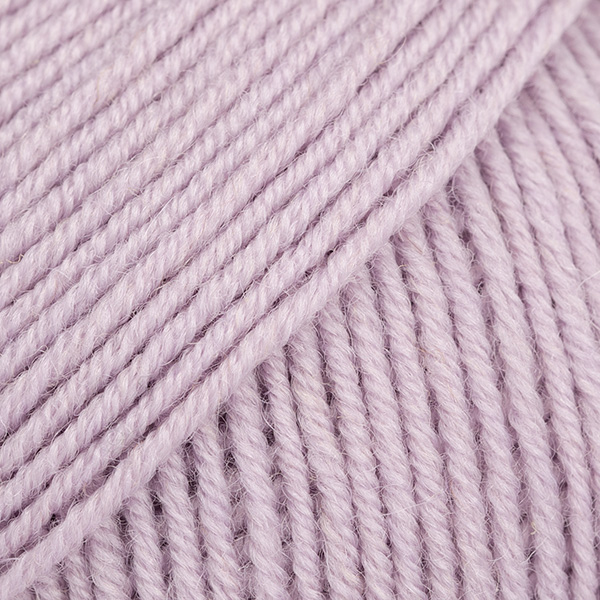
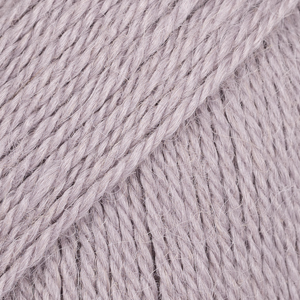














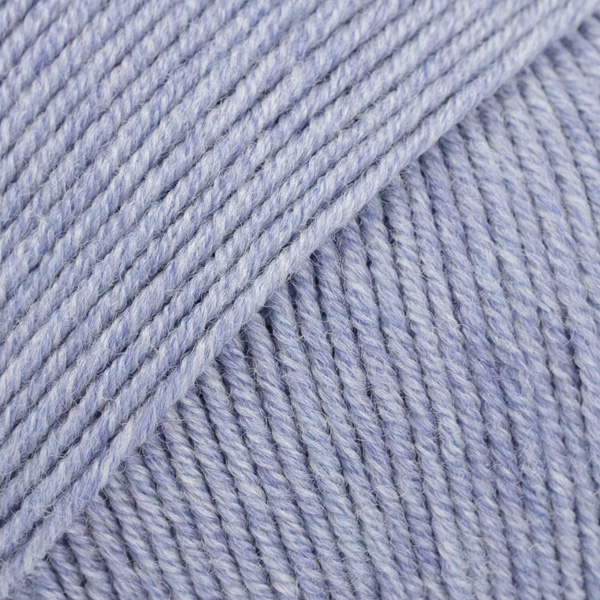












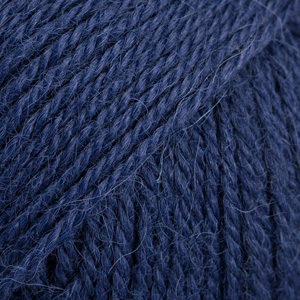






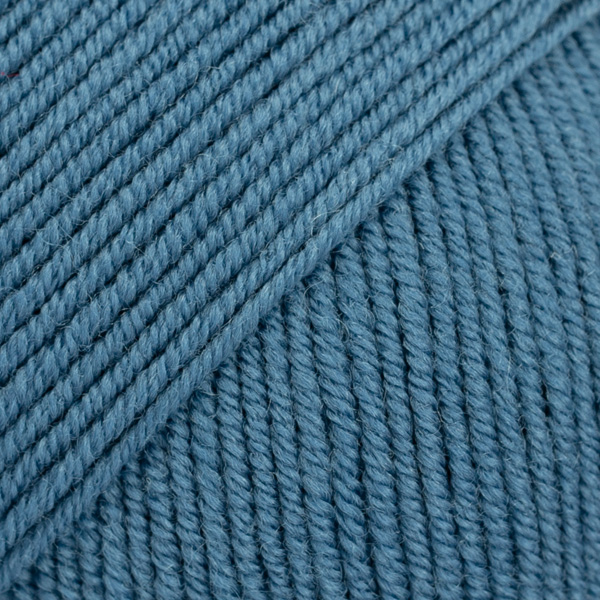





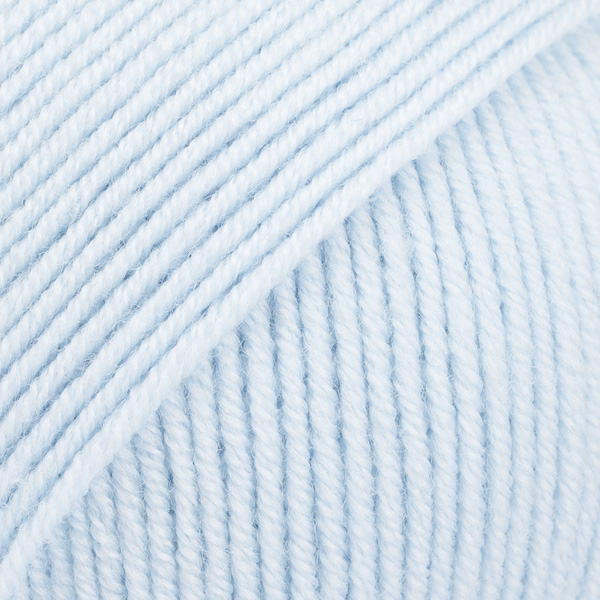




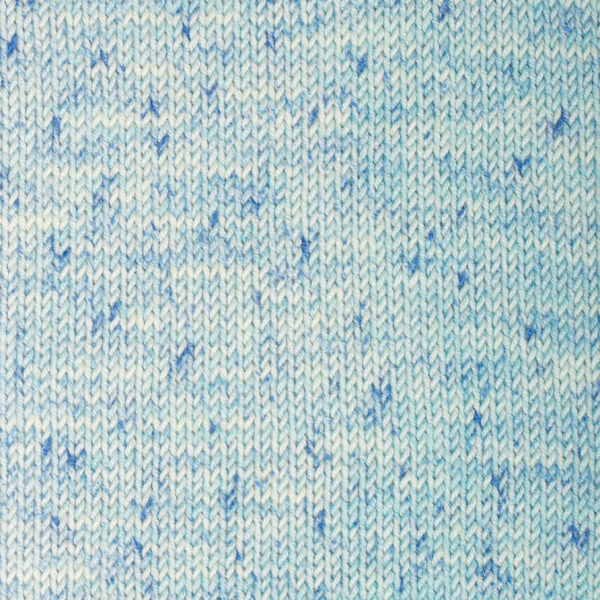


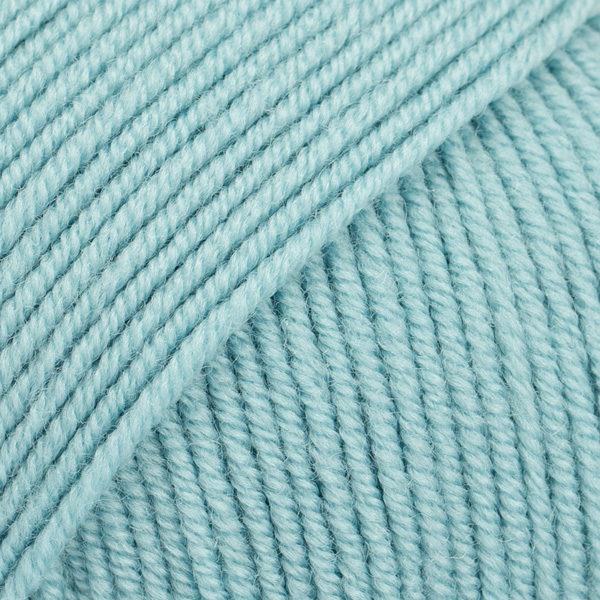



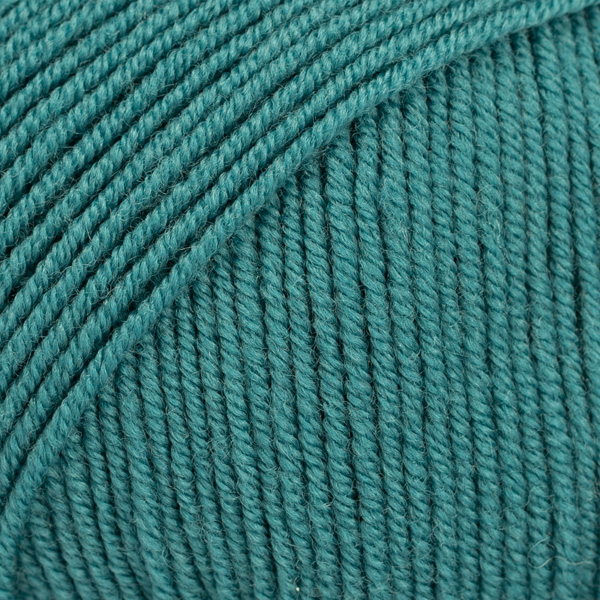




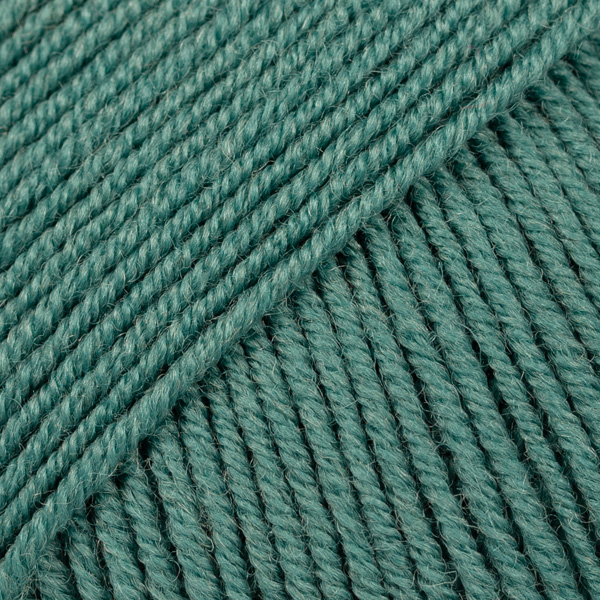

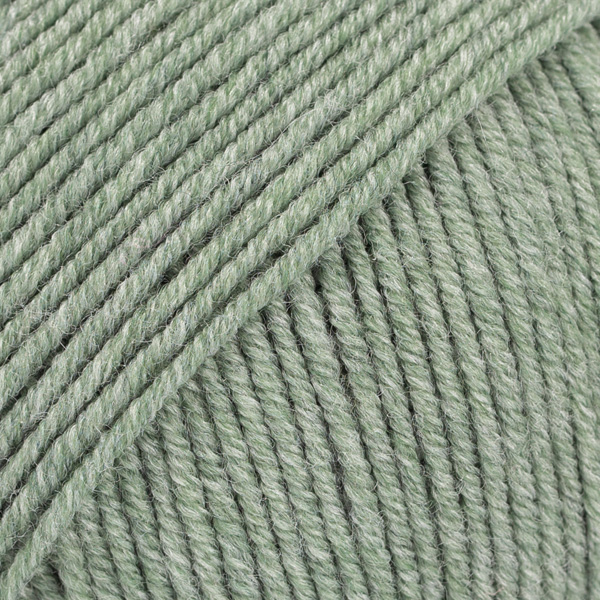

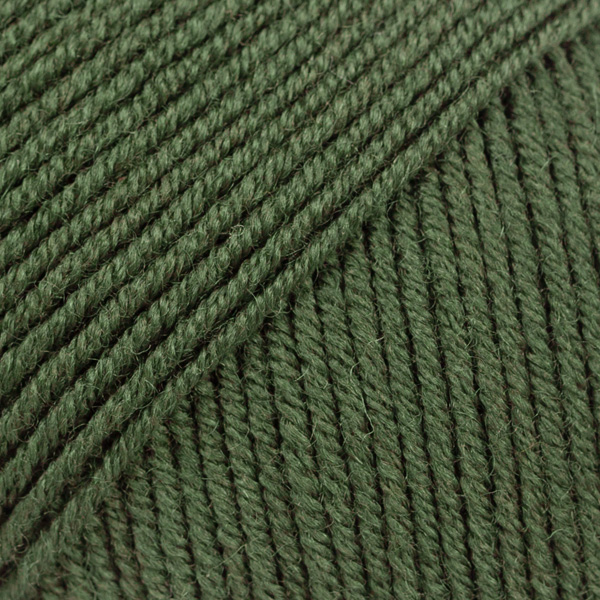
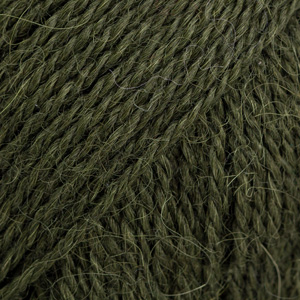





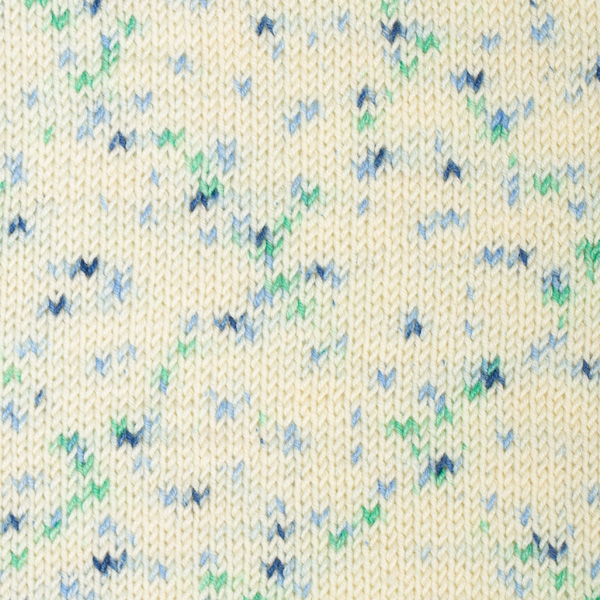


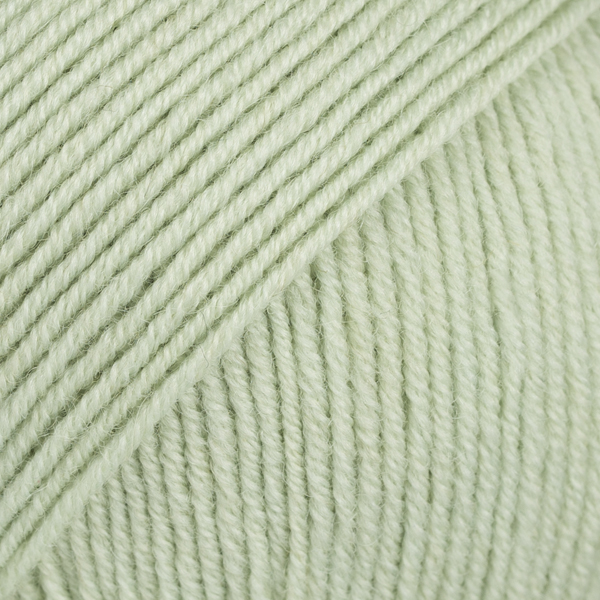

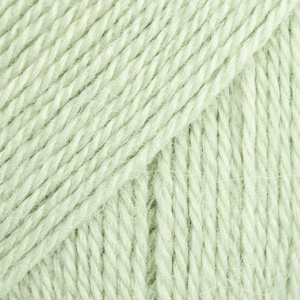






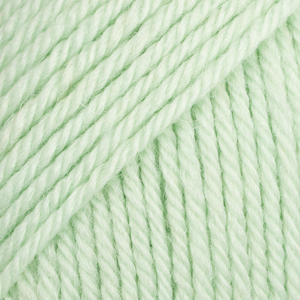










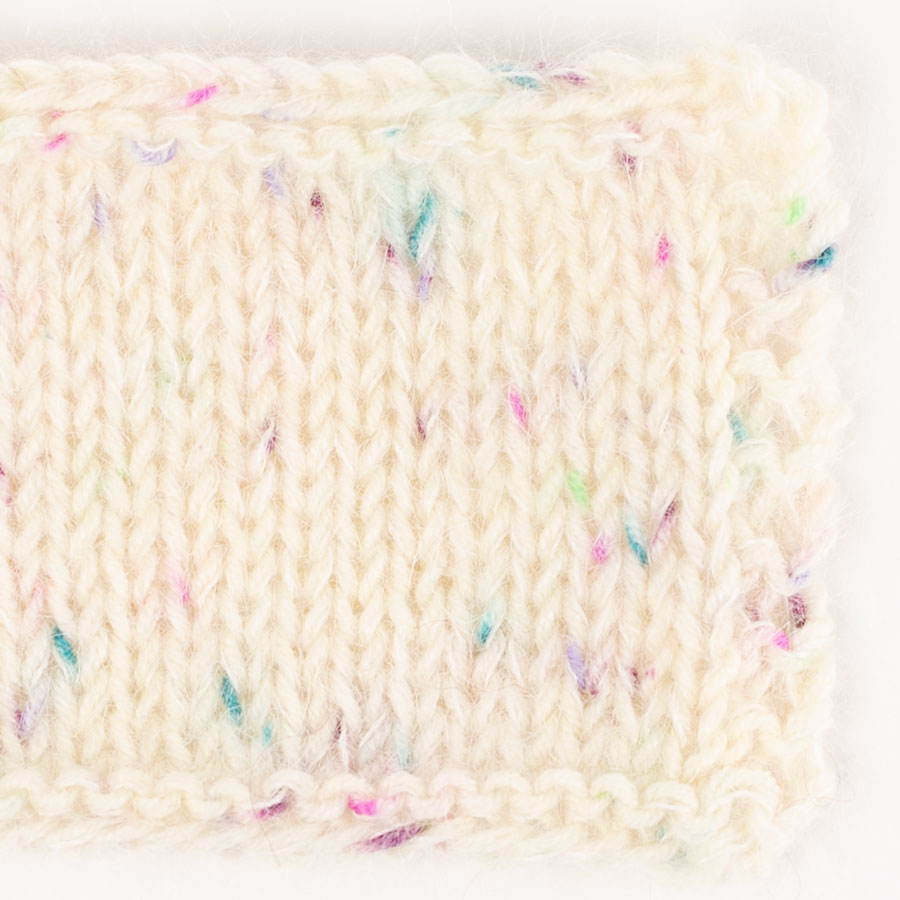
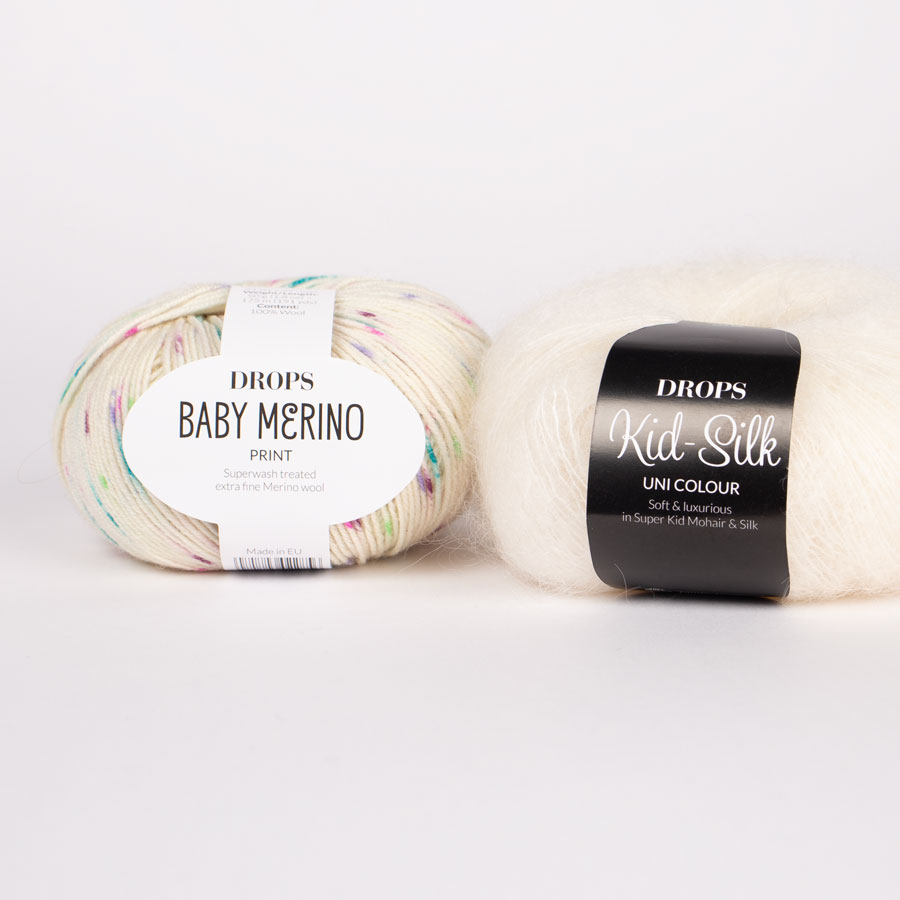
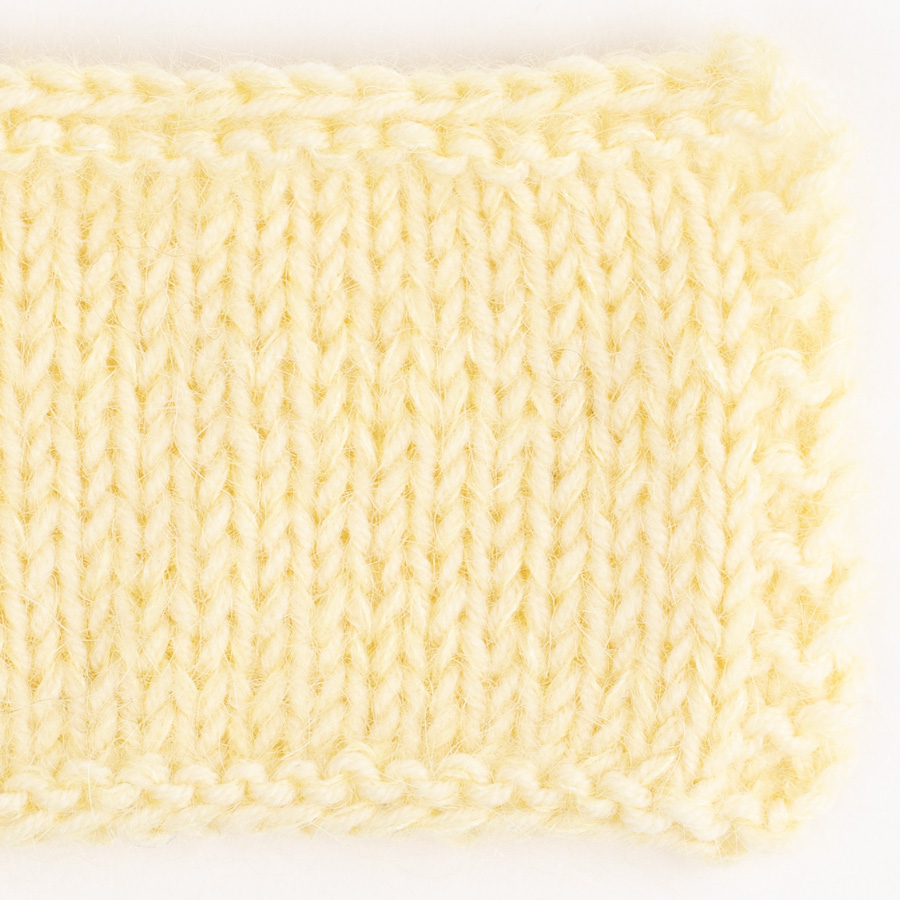
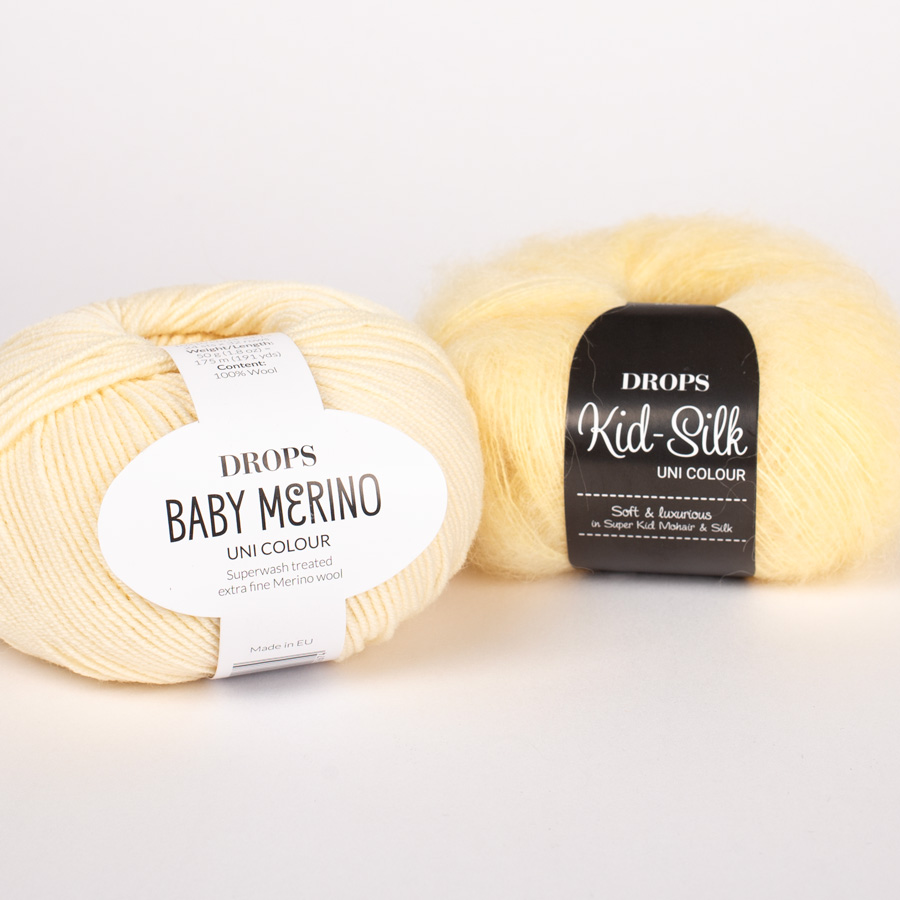
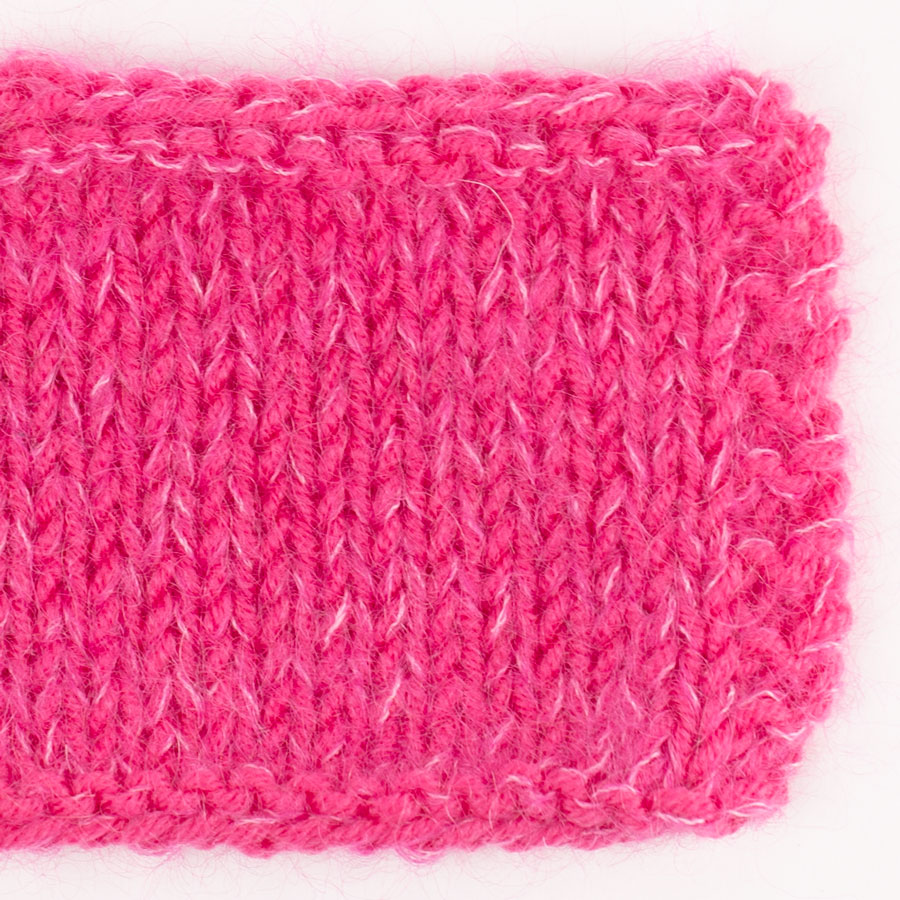
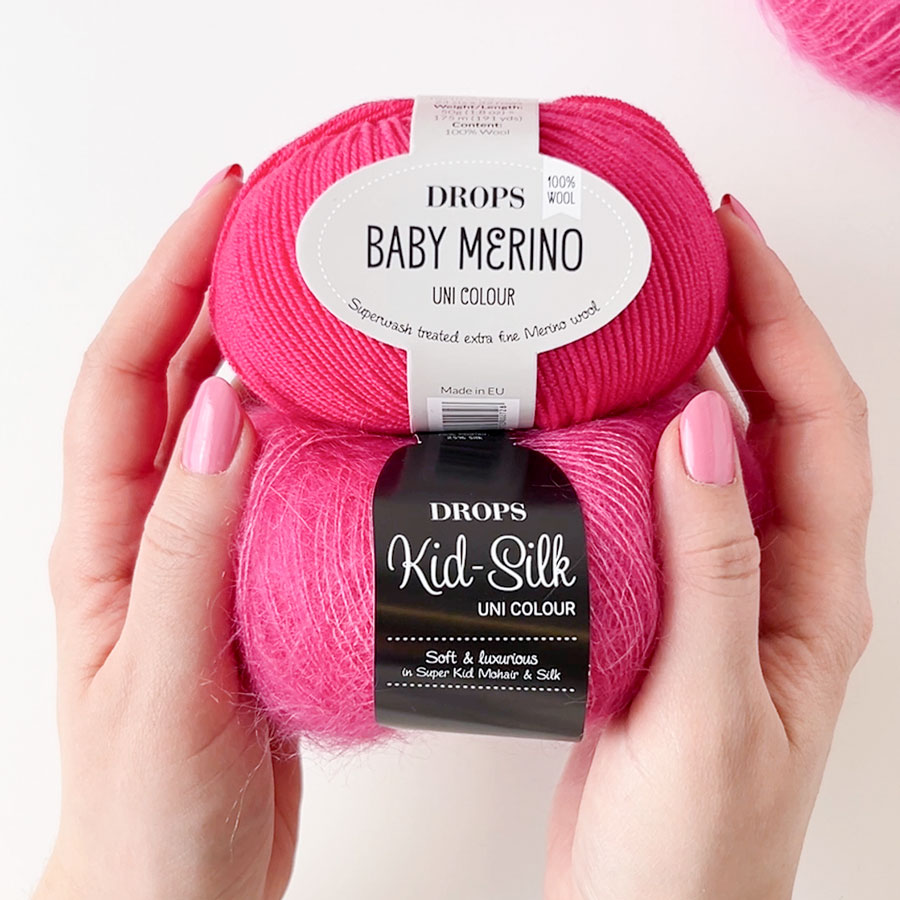
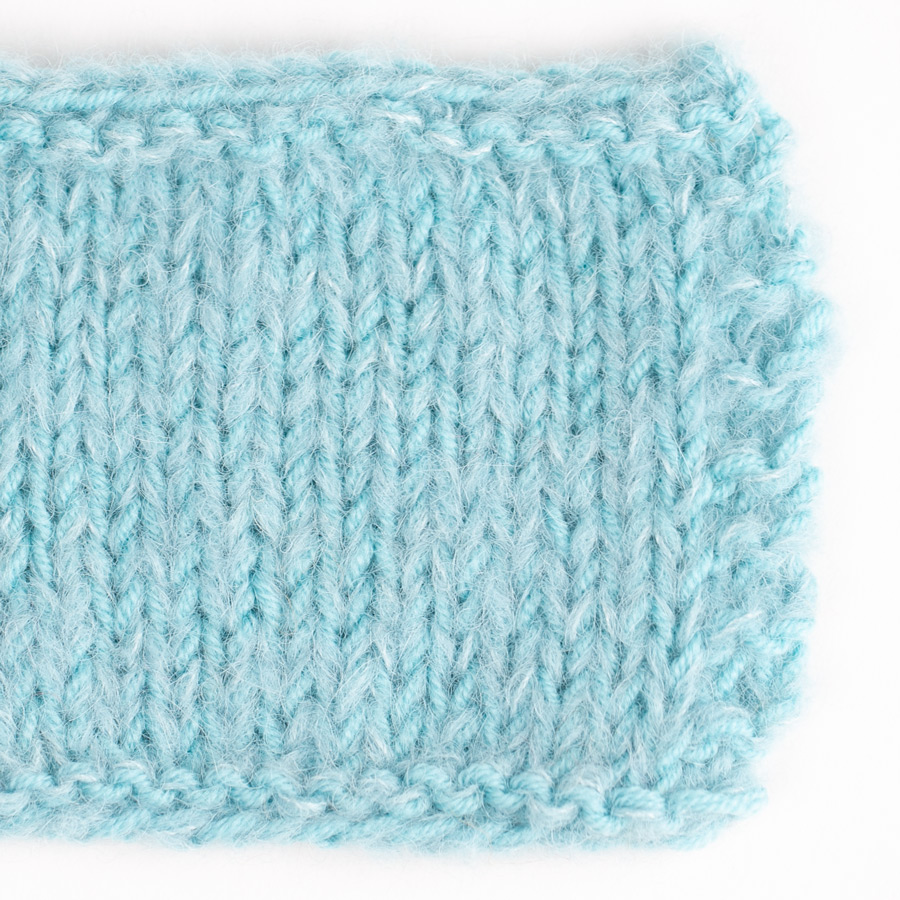
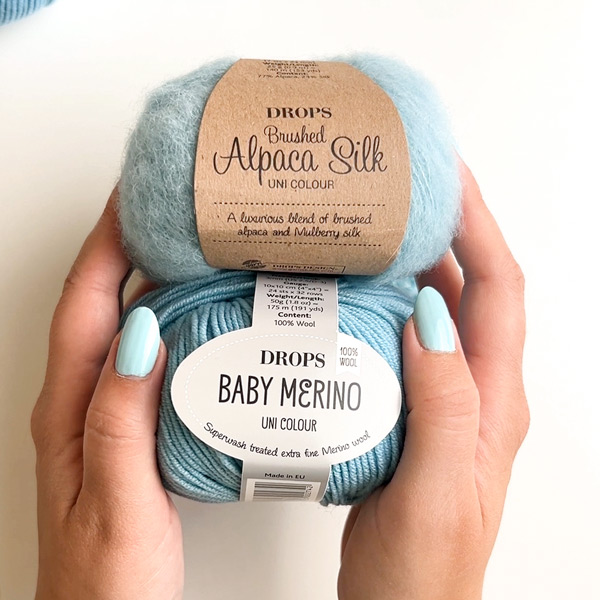
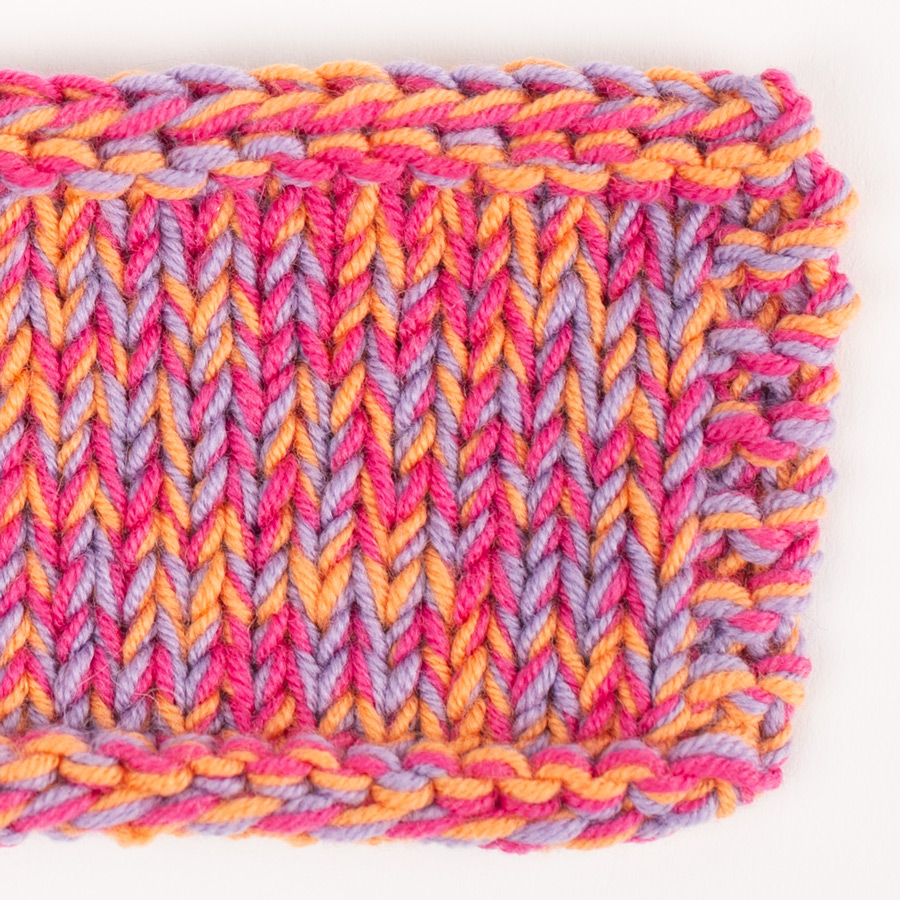
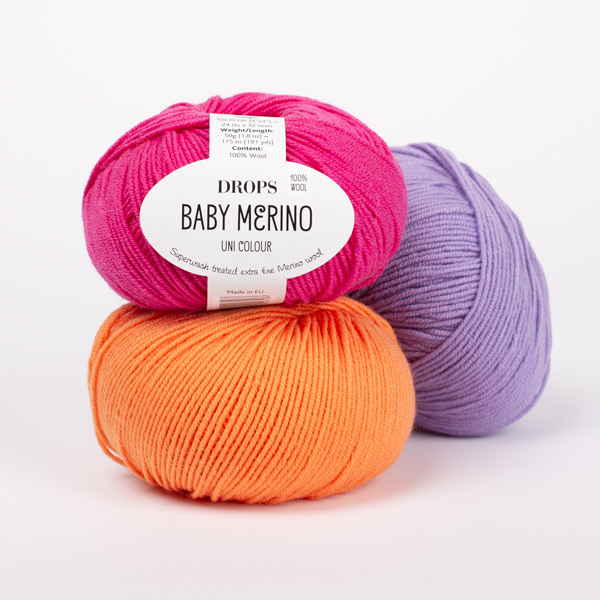
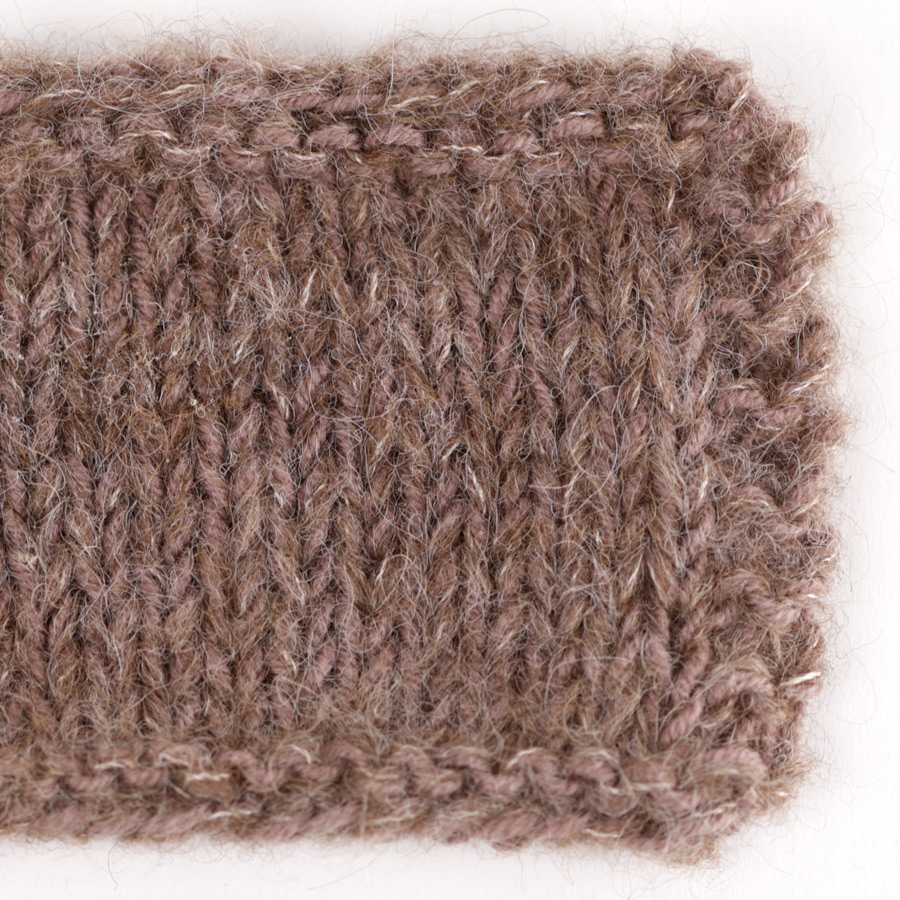
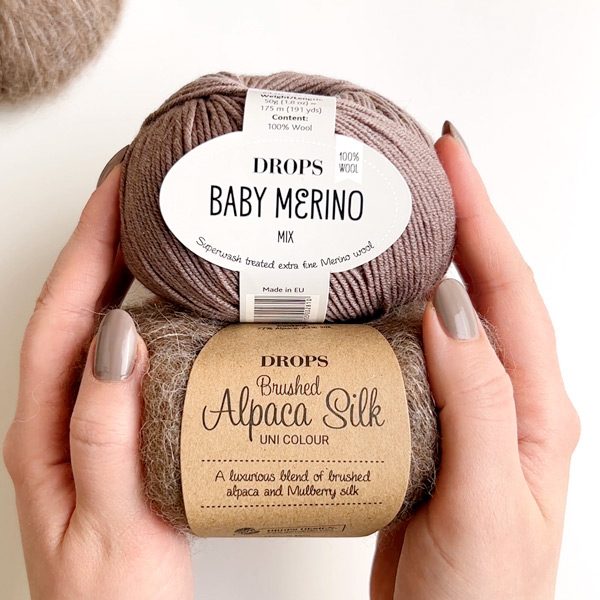
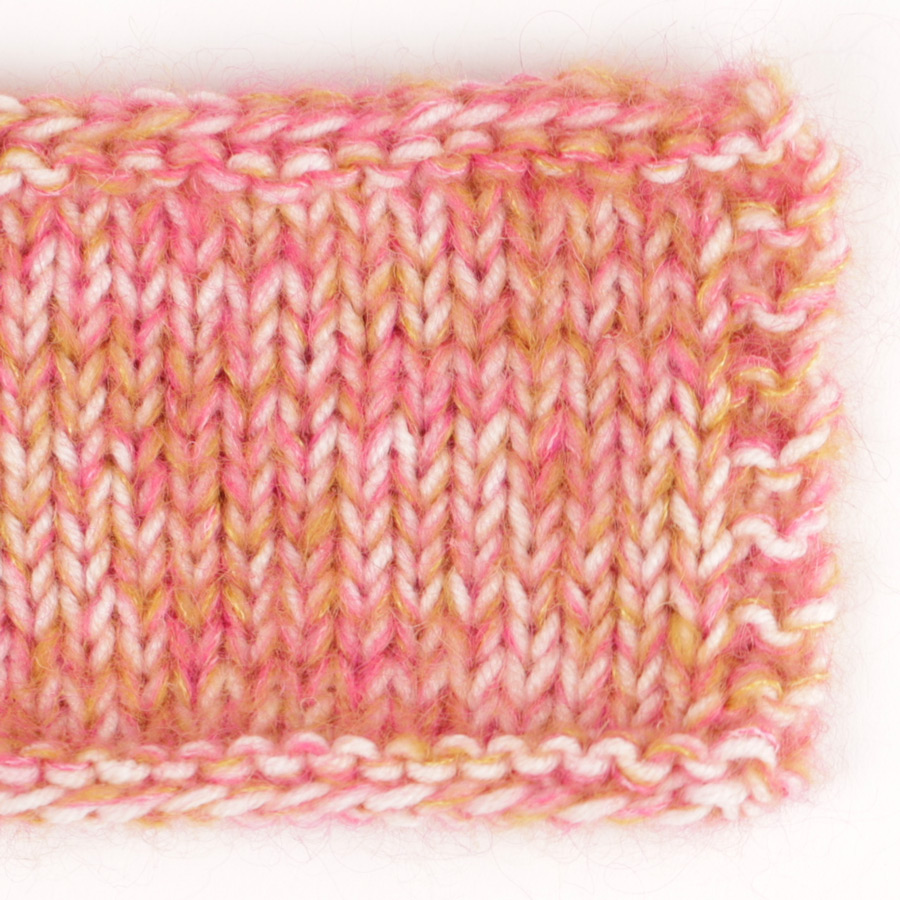
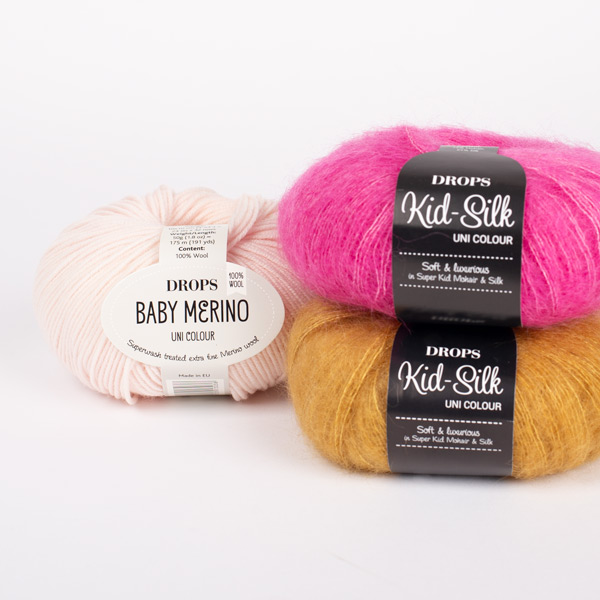
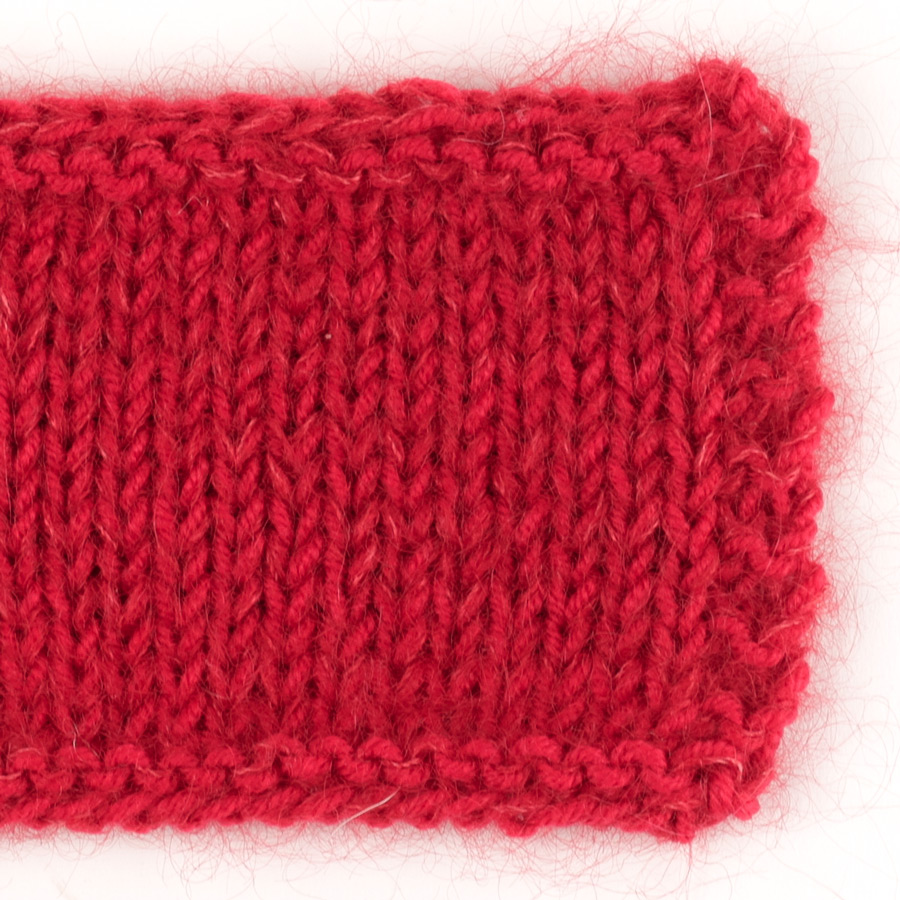
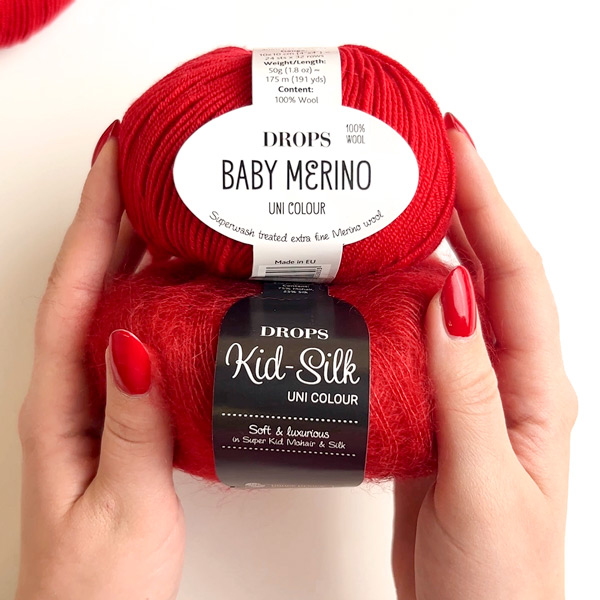


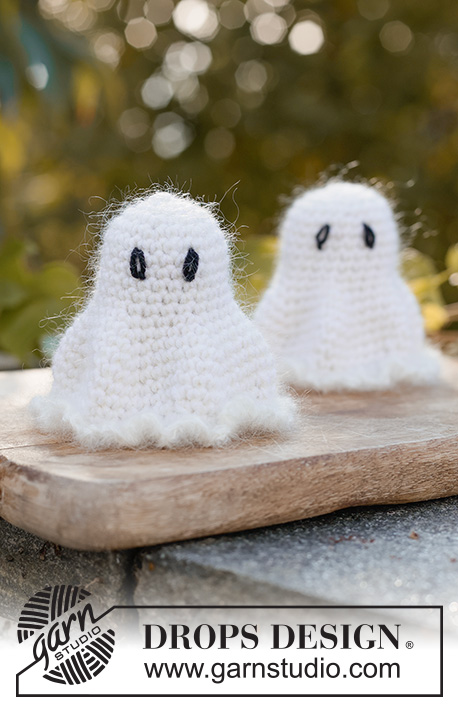






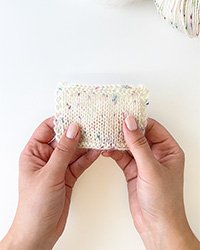

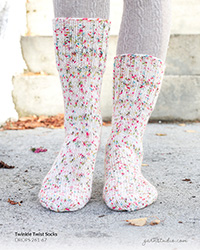
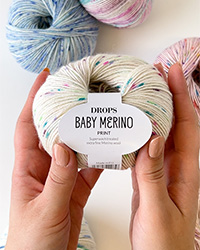
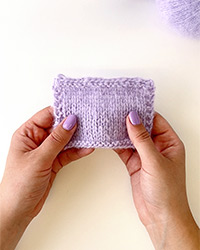
Mit viel freude habe ich die wolle erwartet , die ich zum ersten mal bei lanade bestellt habe! ich habe mich sehr auf die farbe hellgelb nr.03 gefreut leider kommt die farbe mehr der farbe 02 naeher in creme näher ich bin sehr enttäuscht darüber
06.01.2015 - 14:36